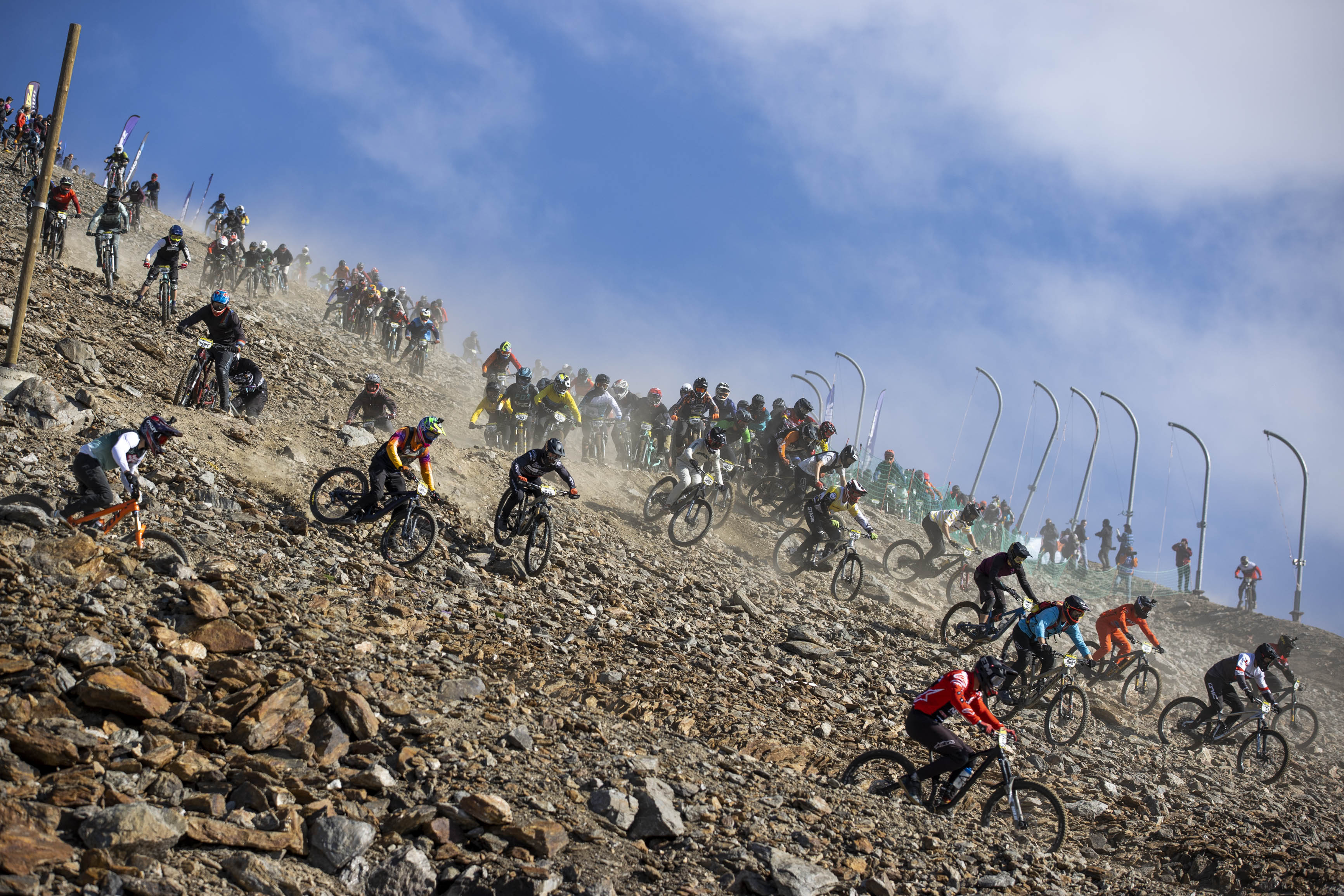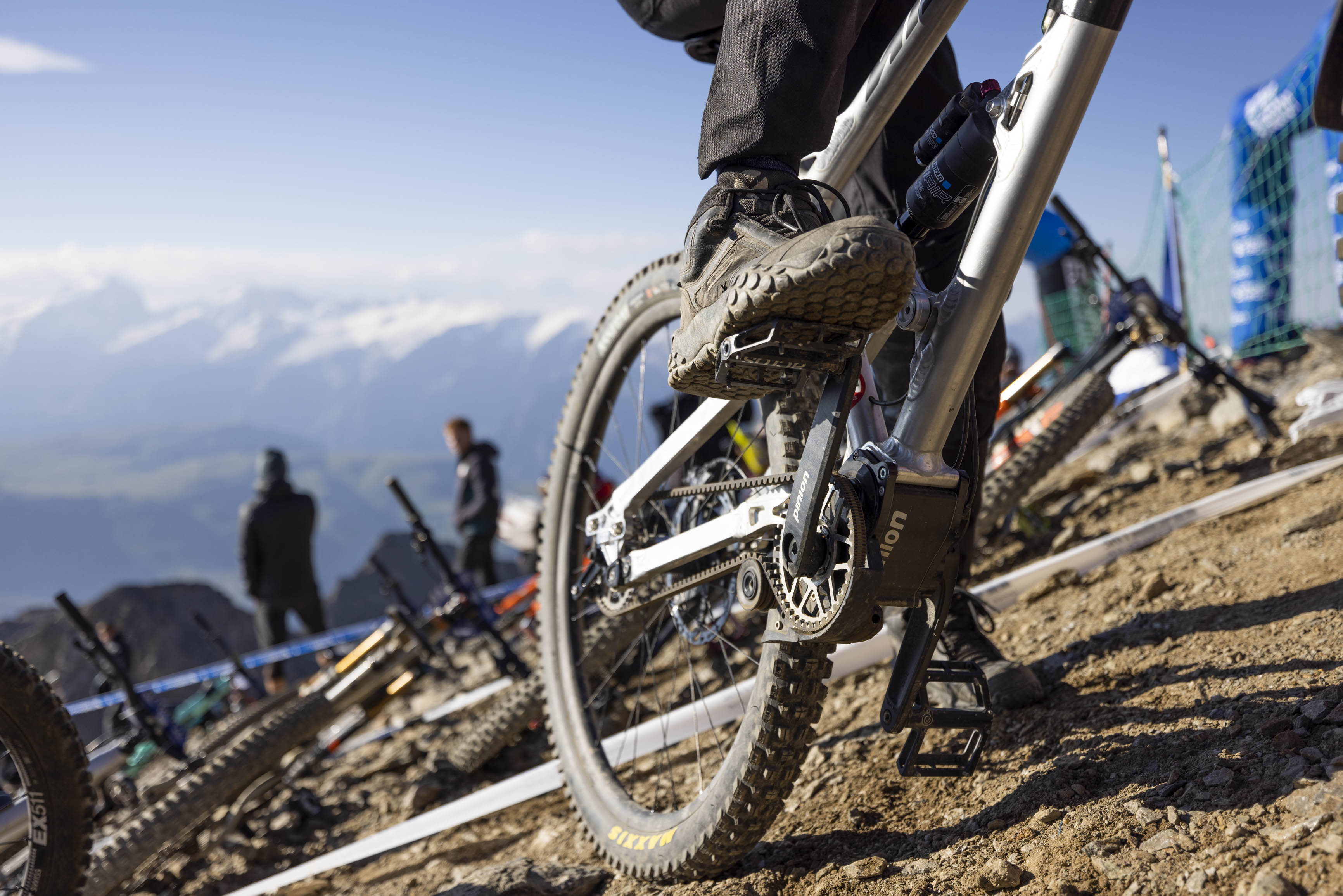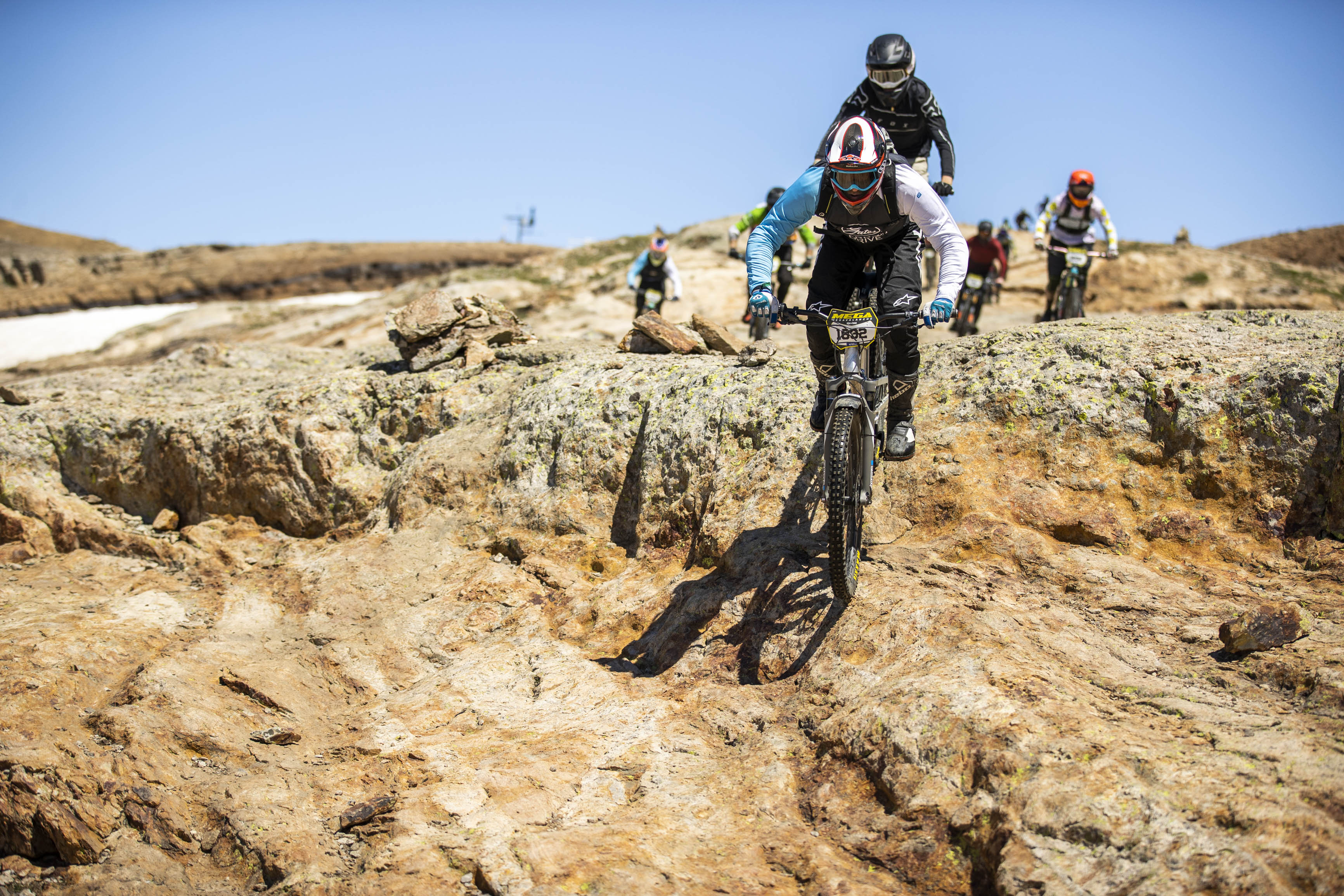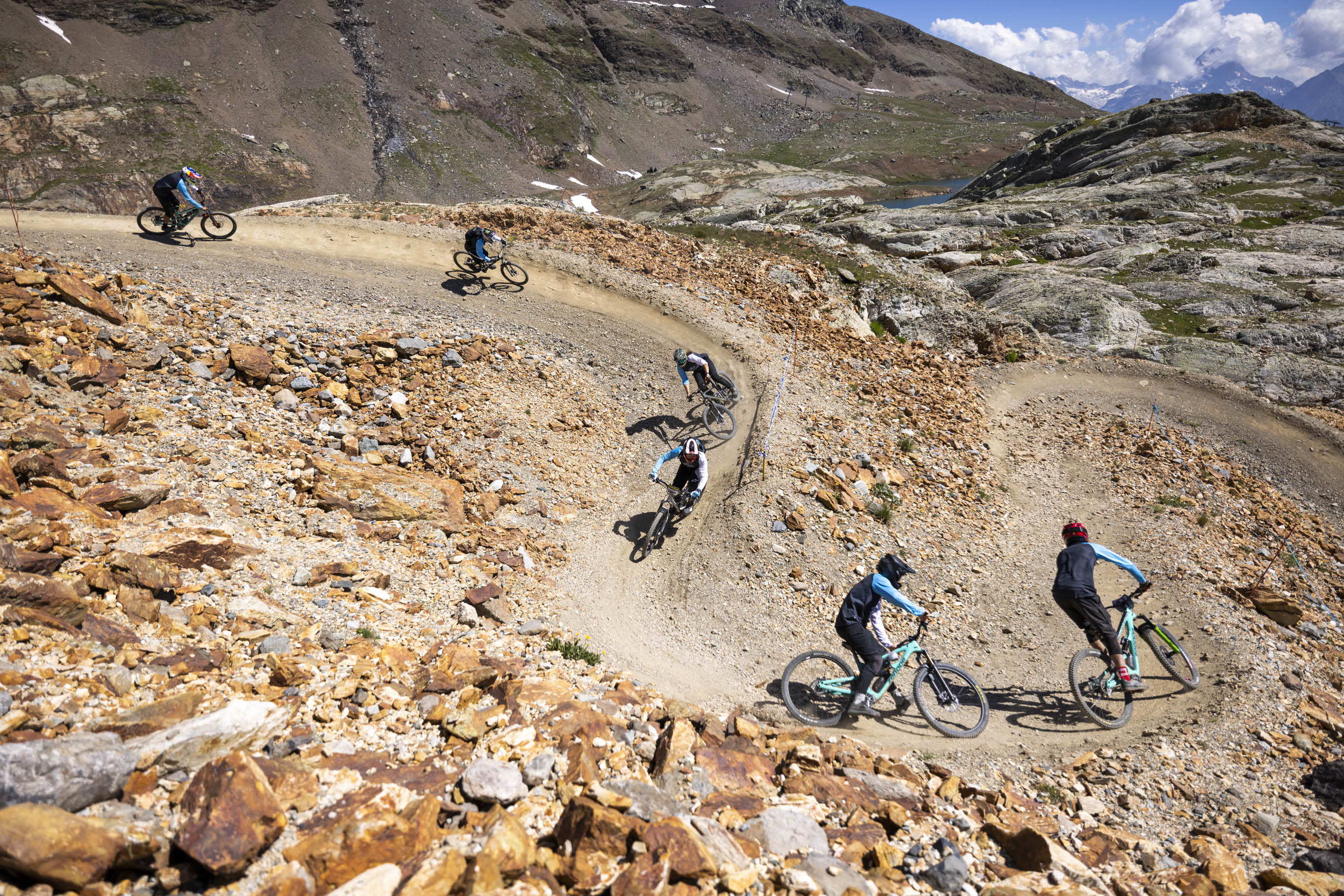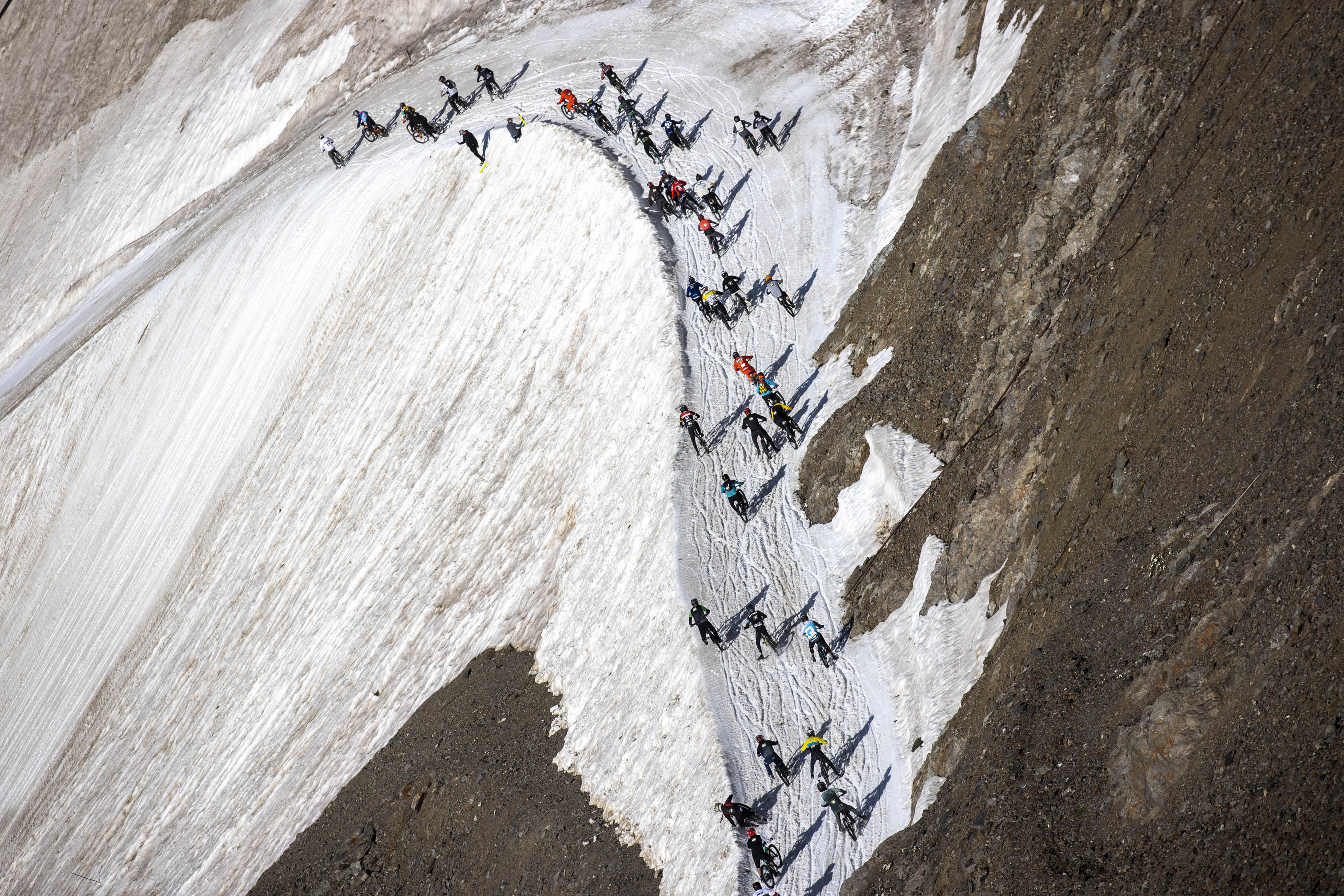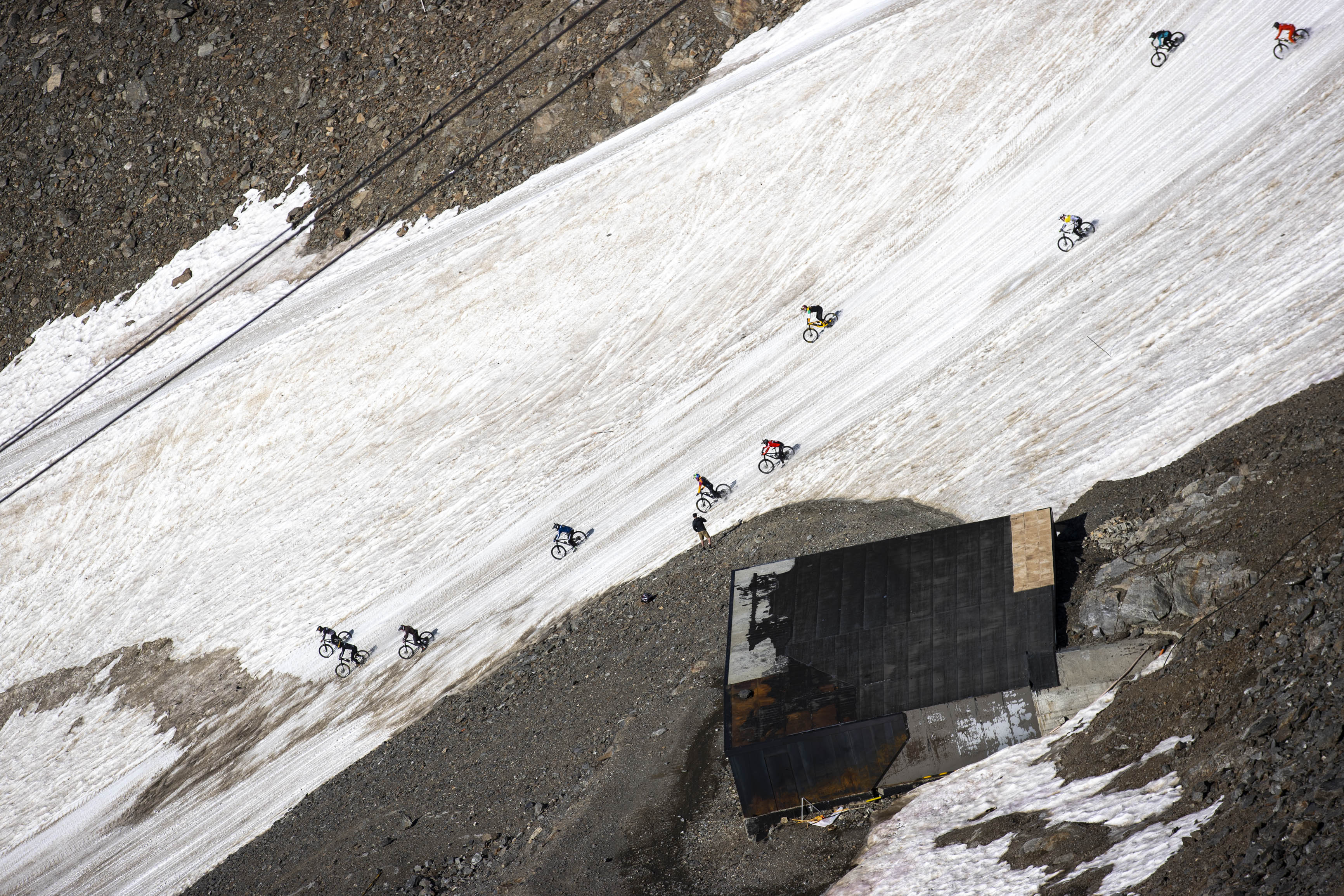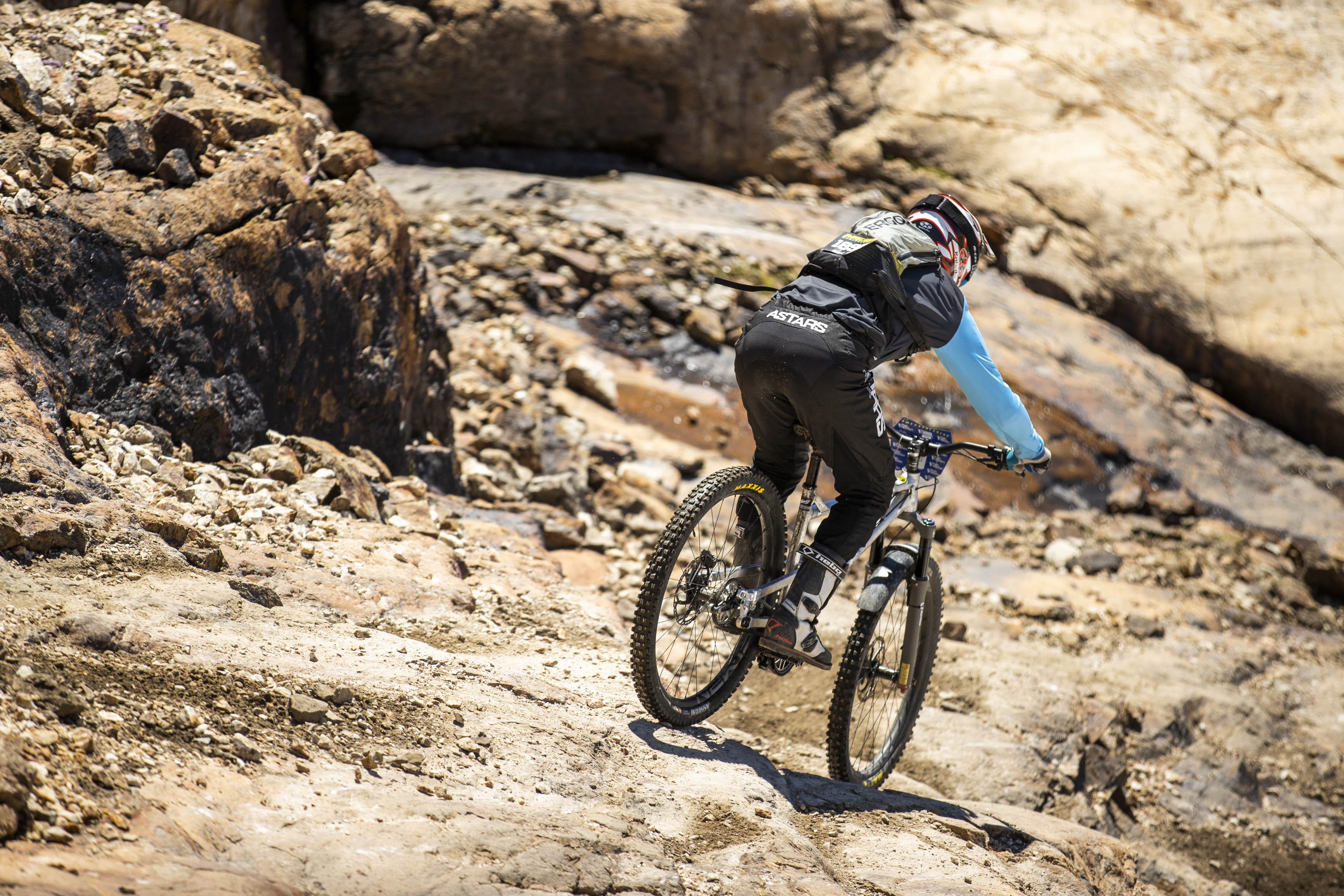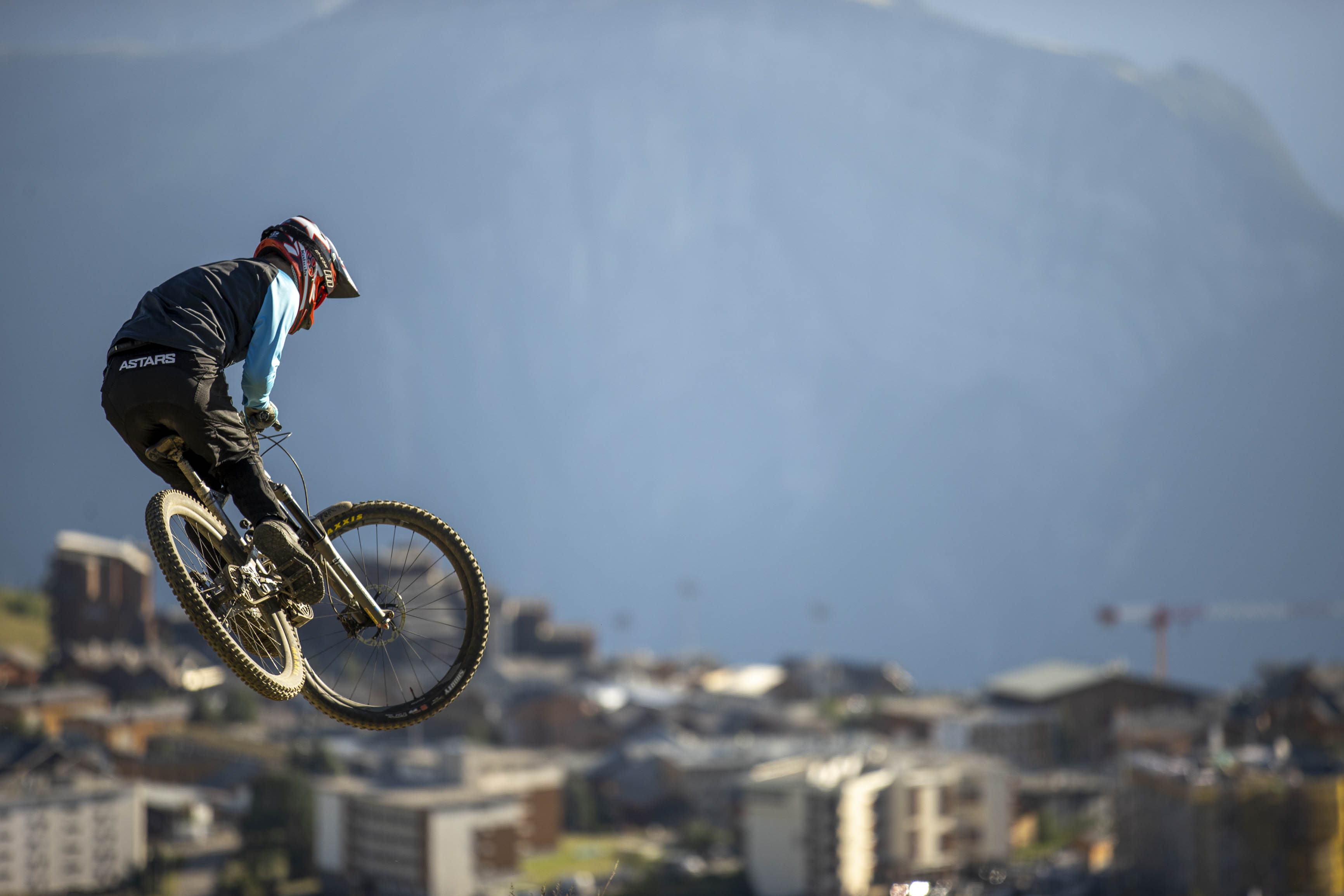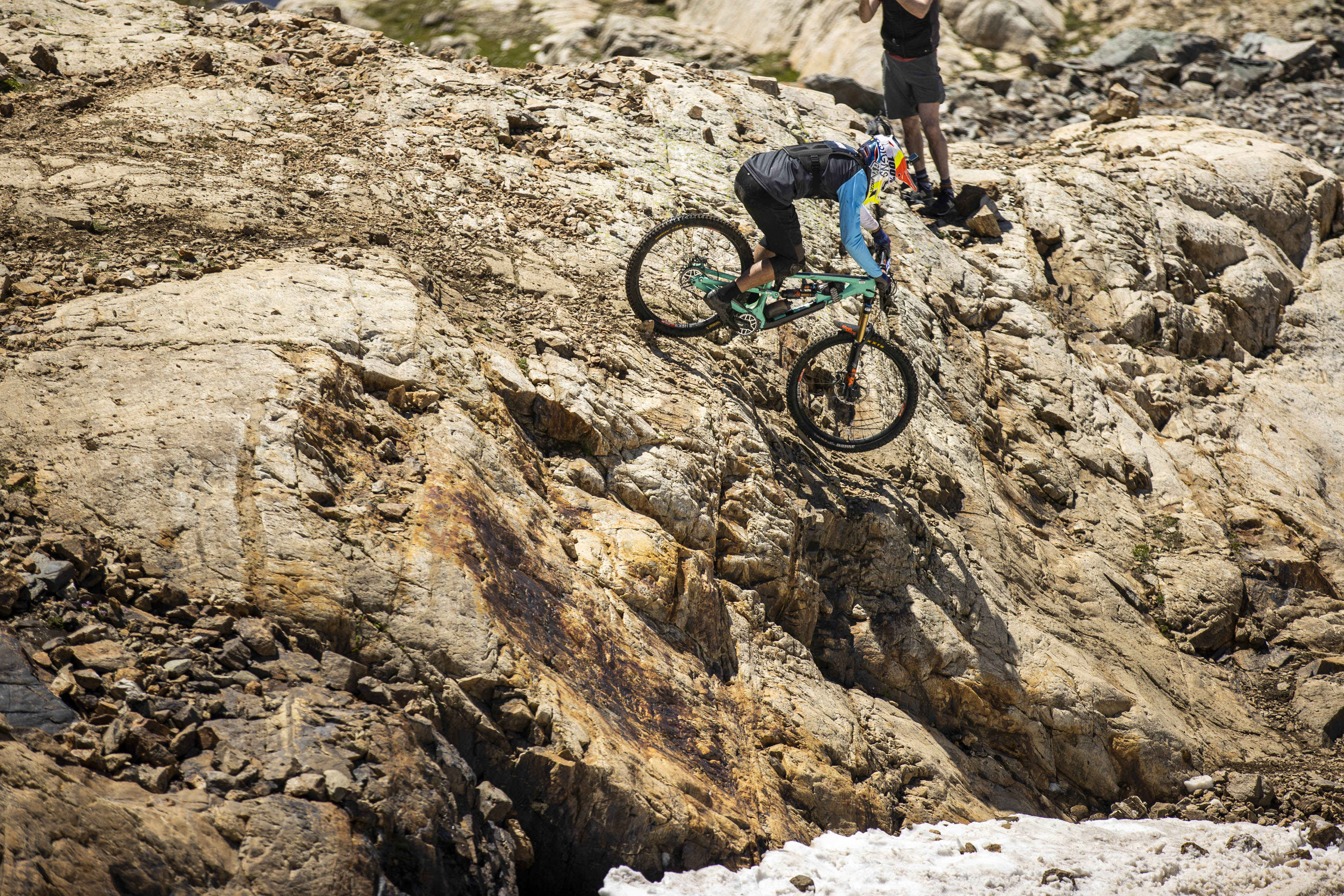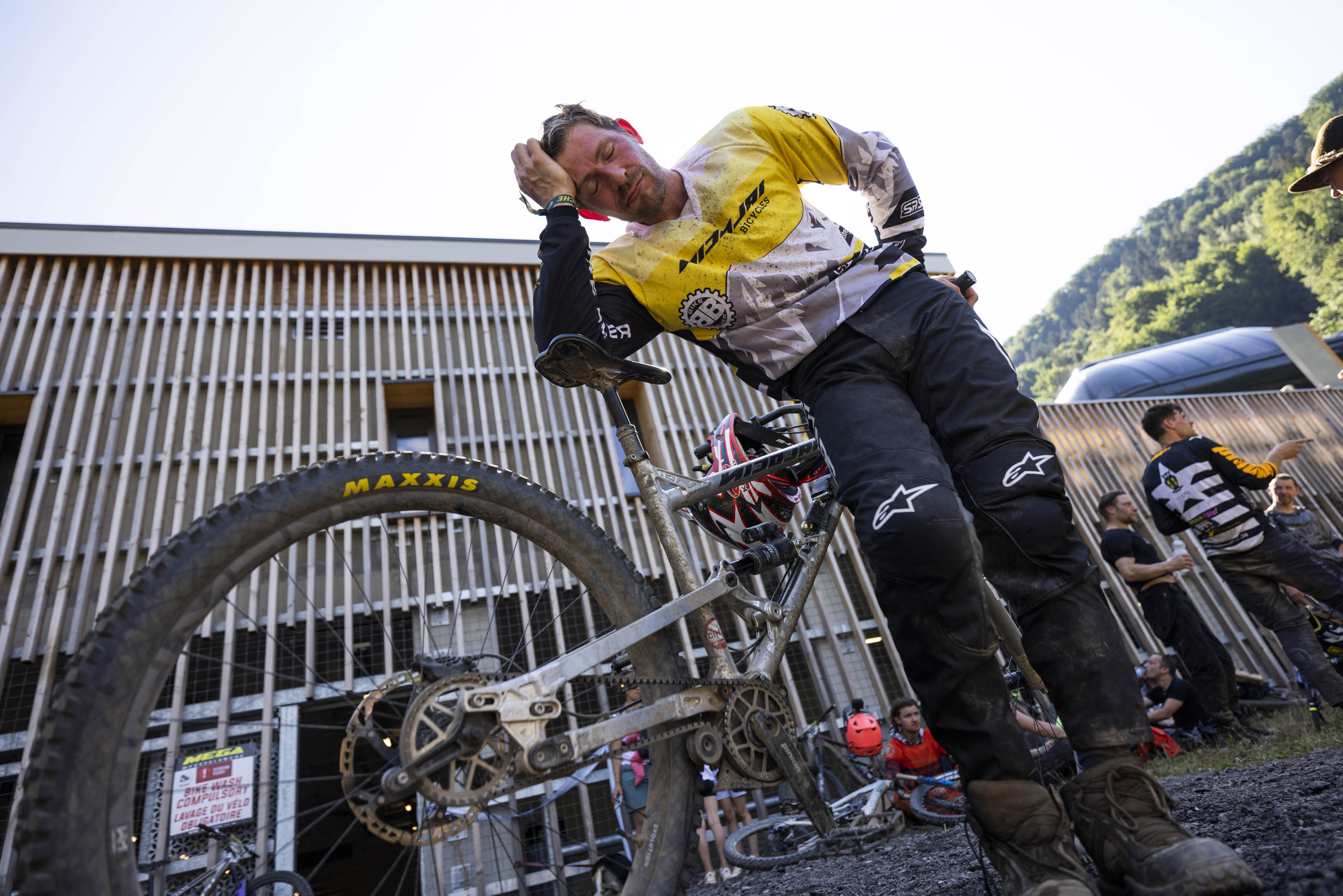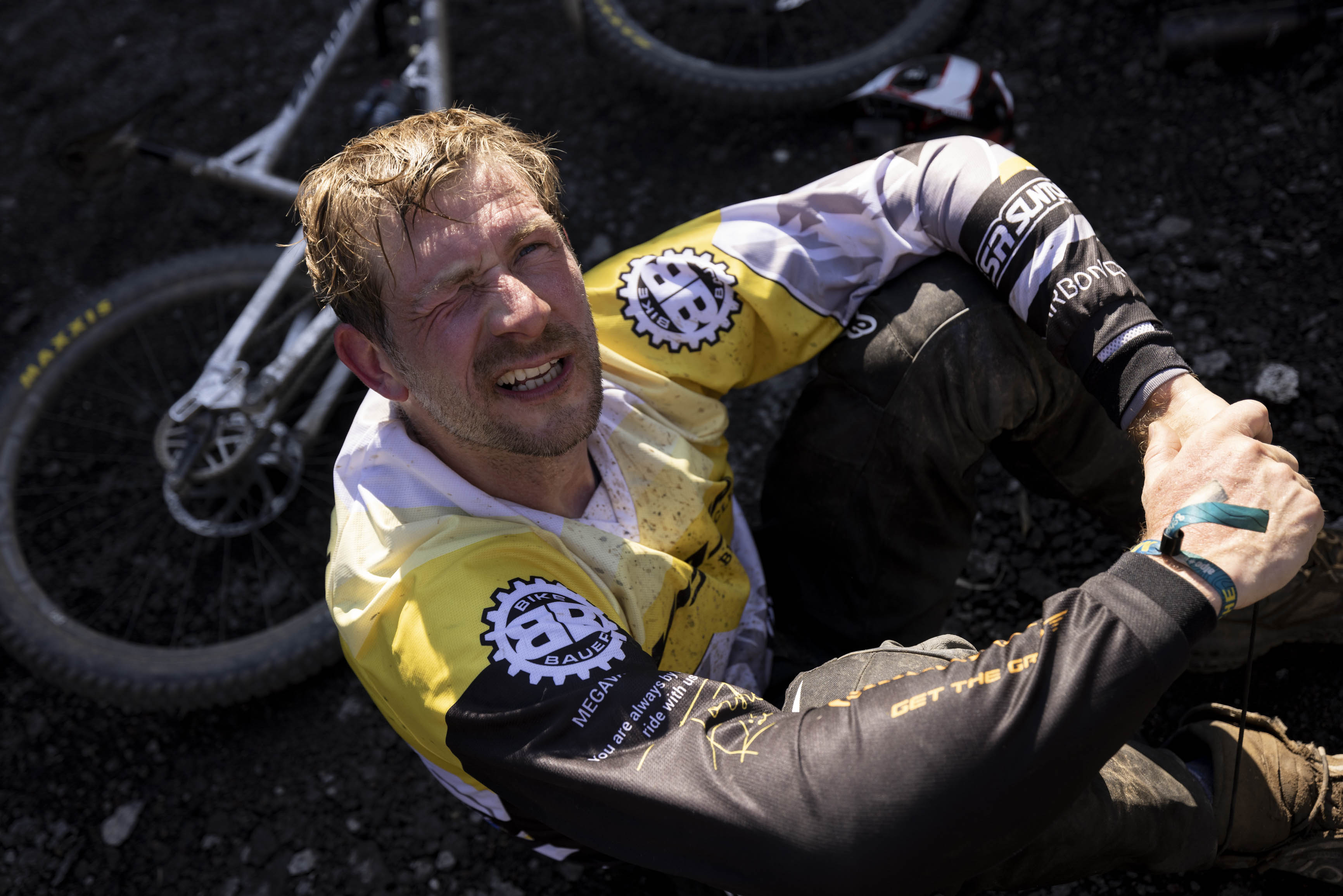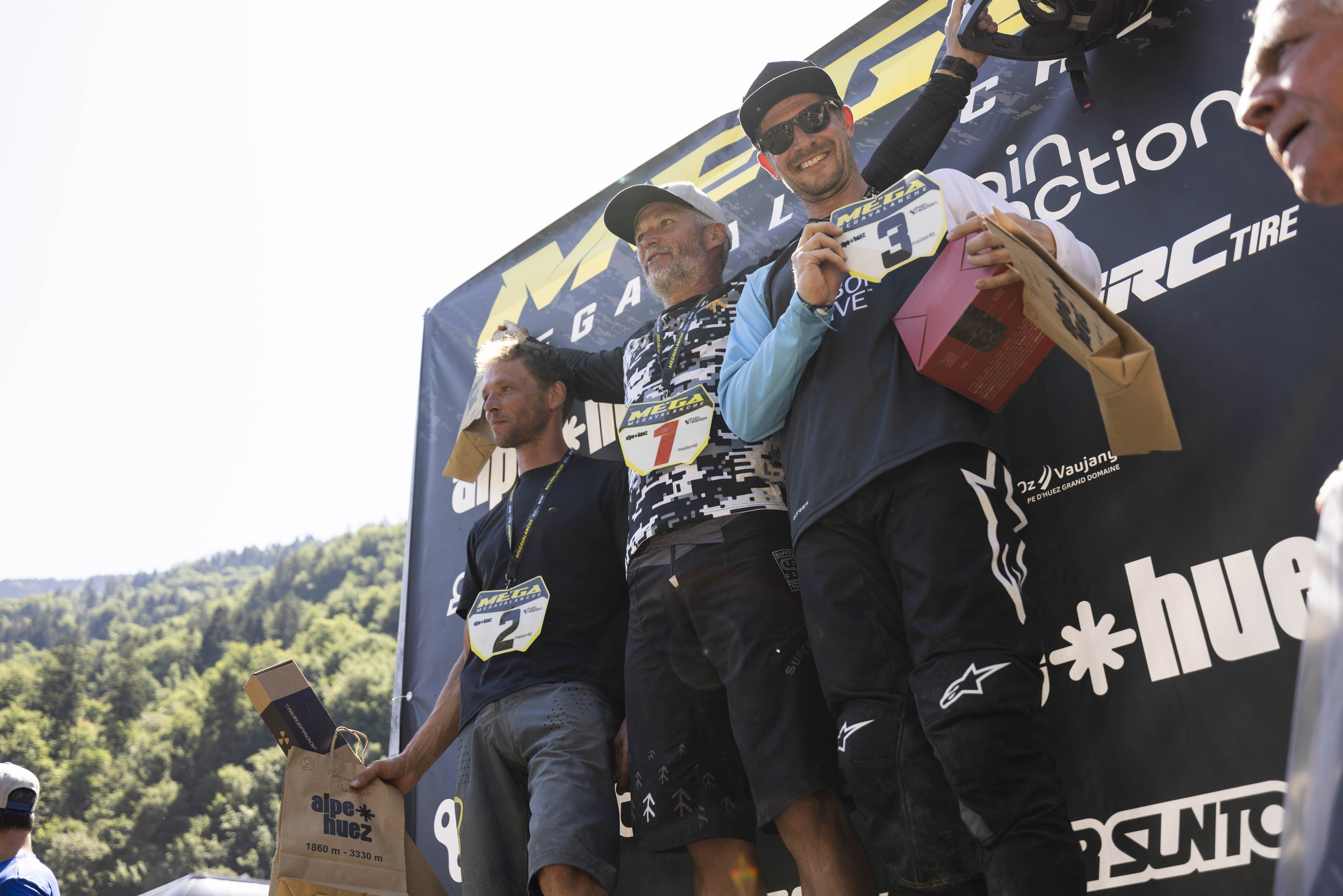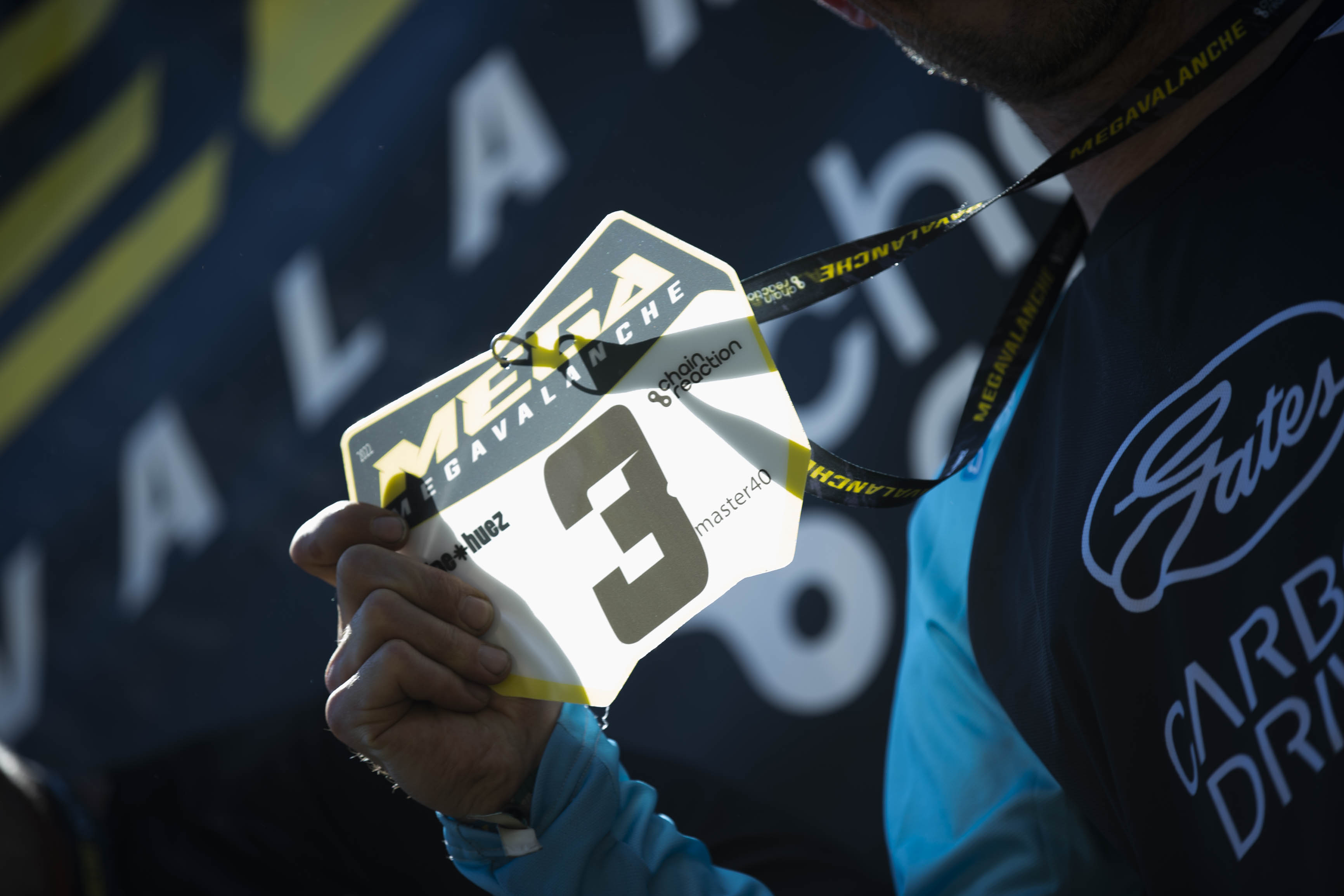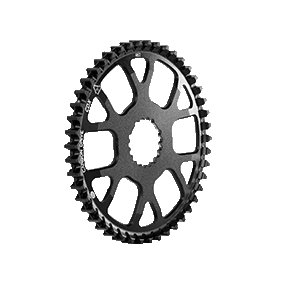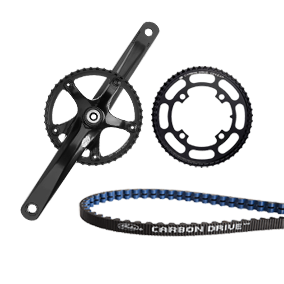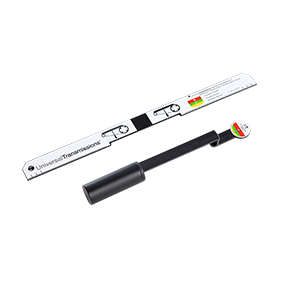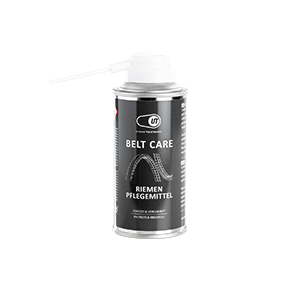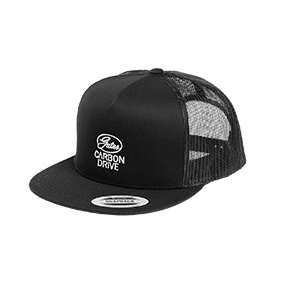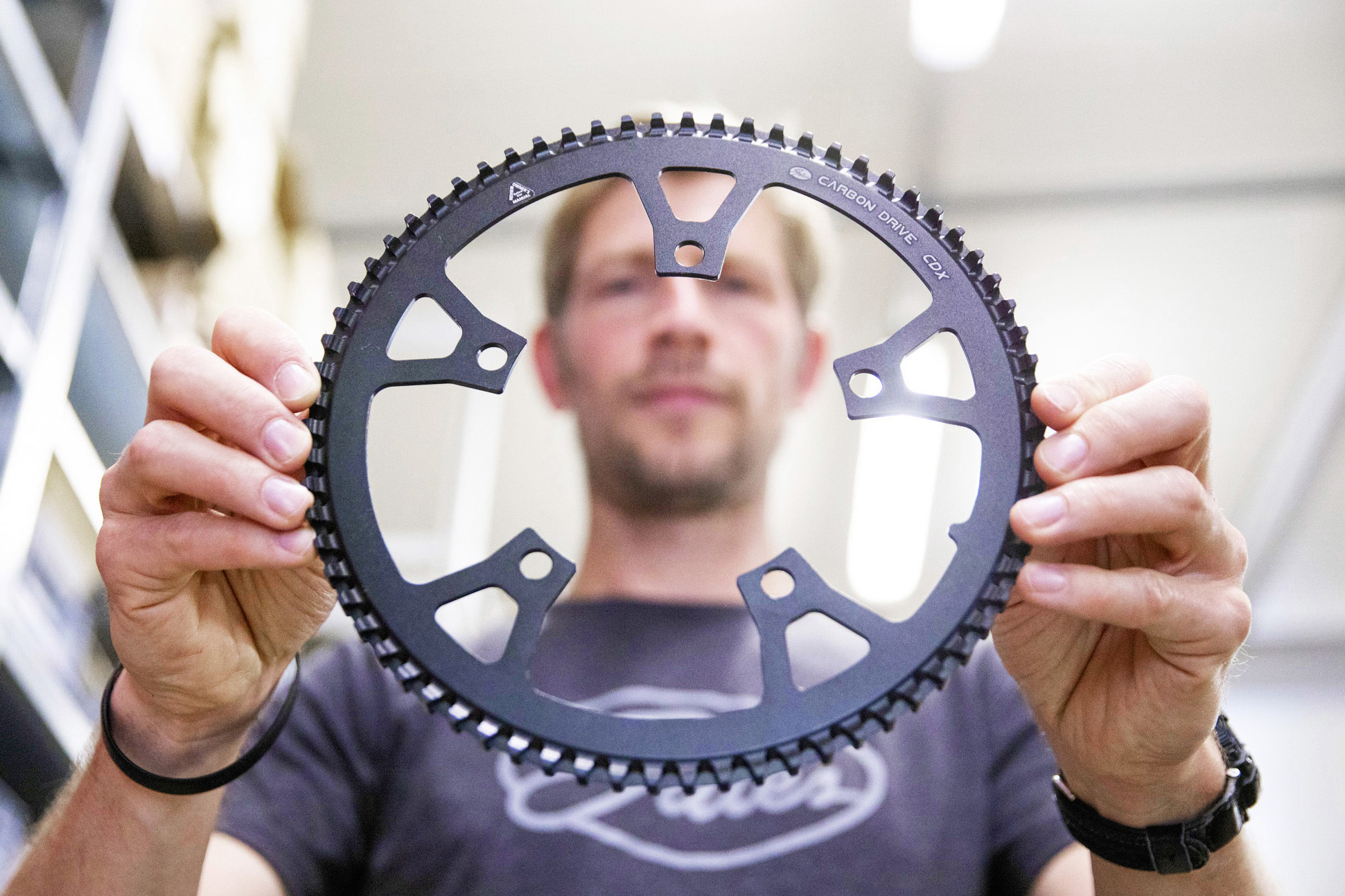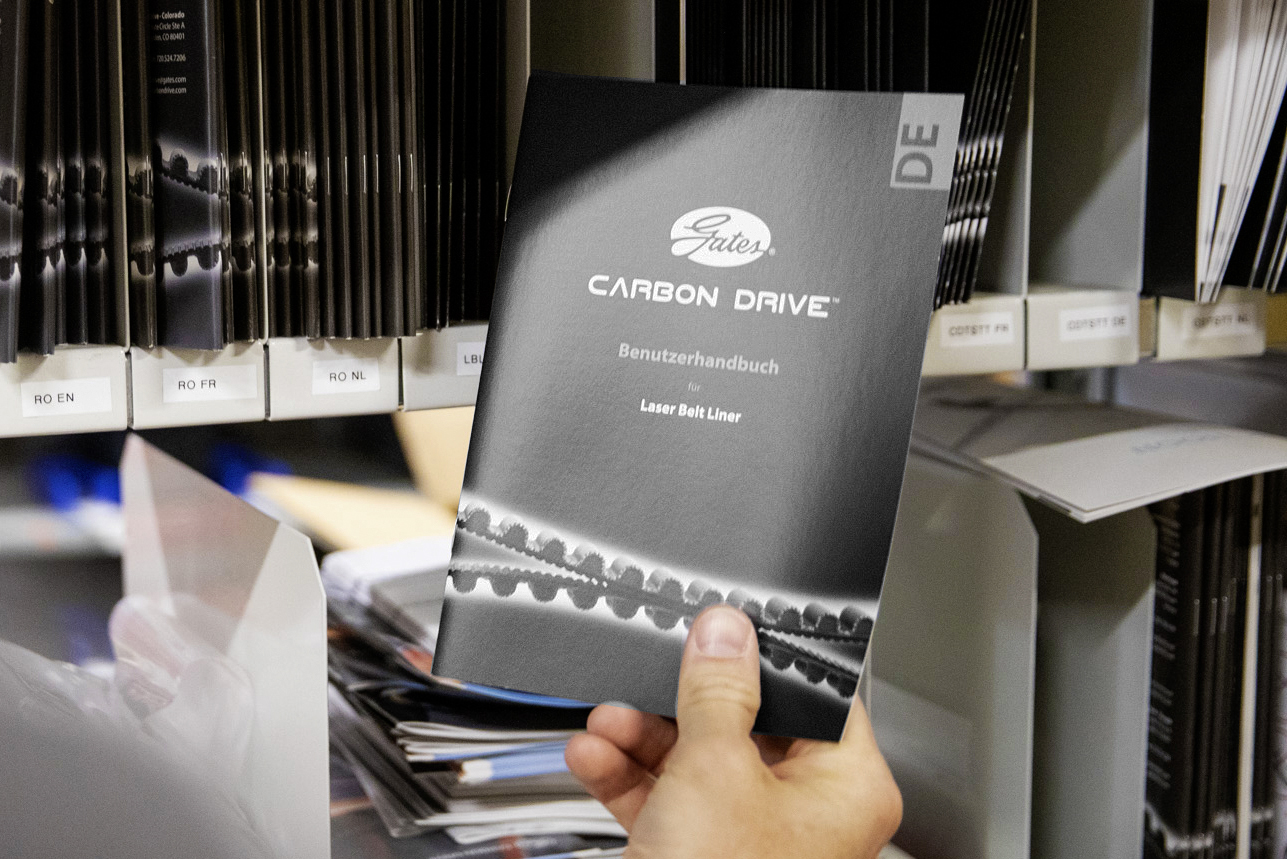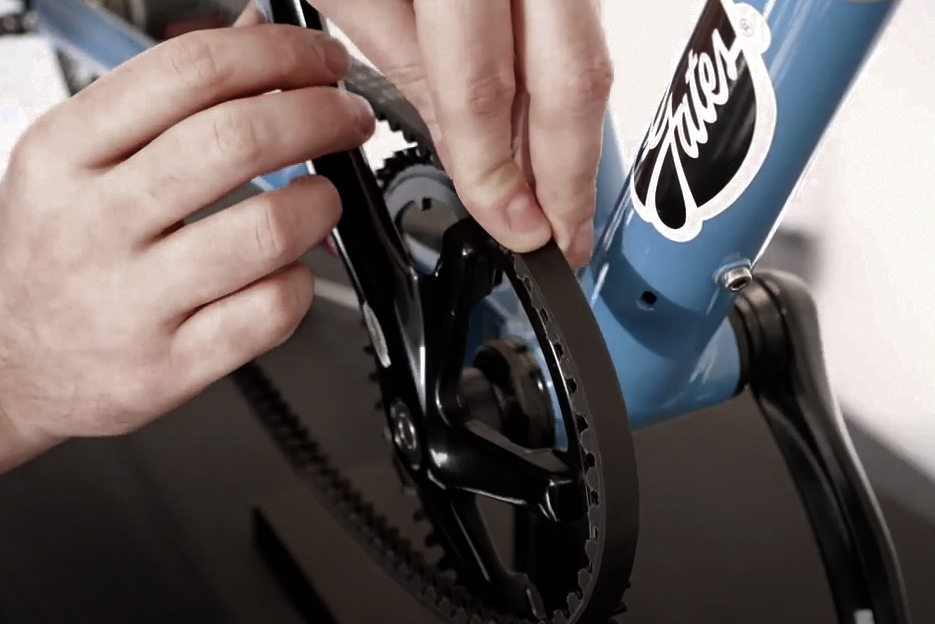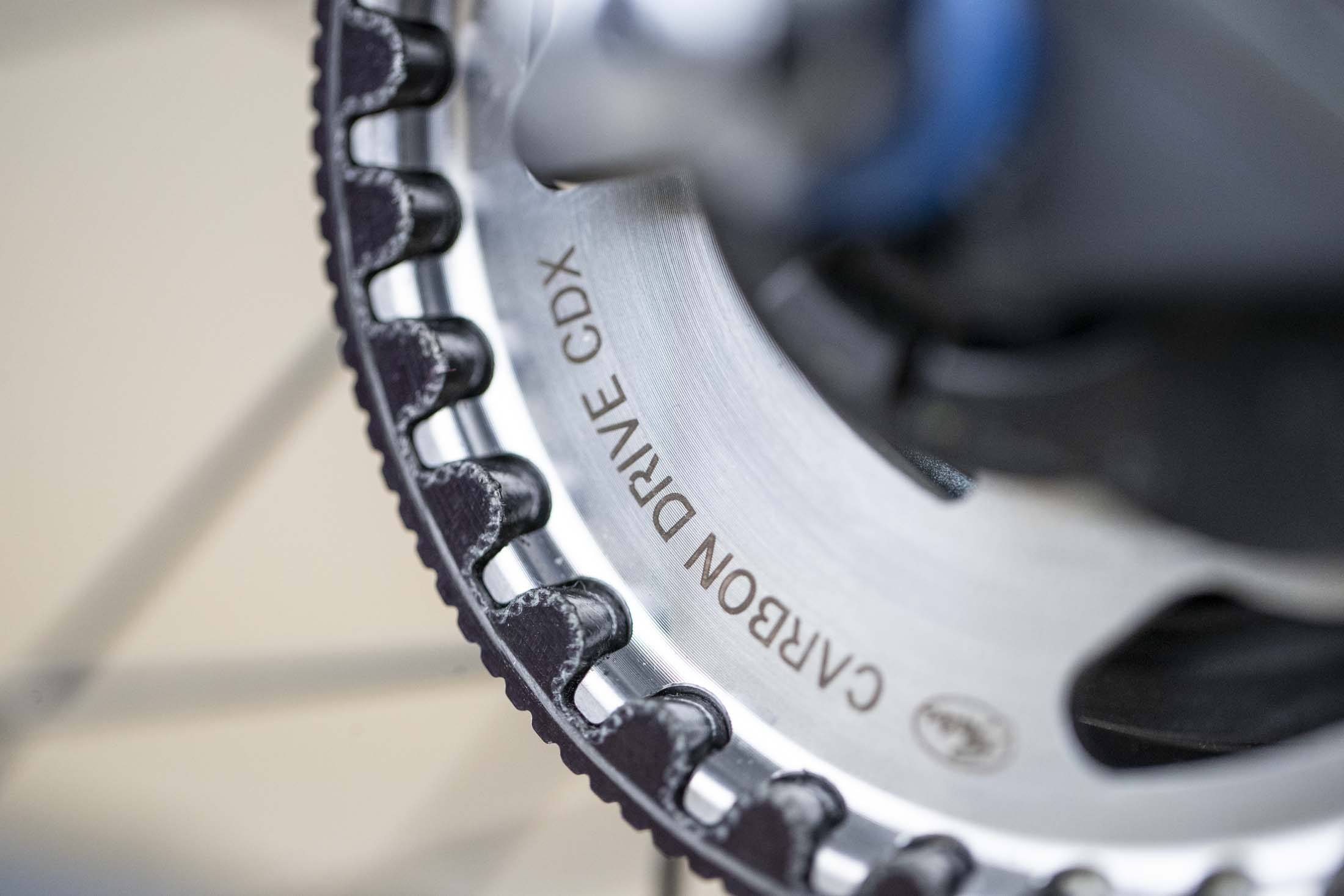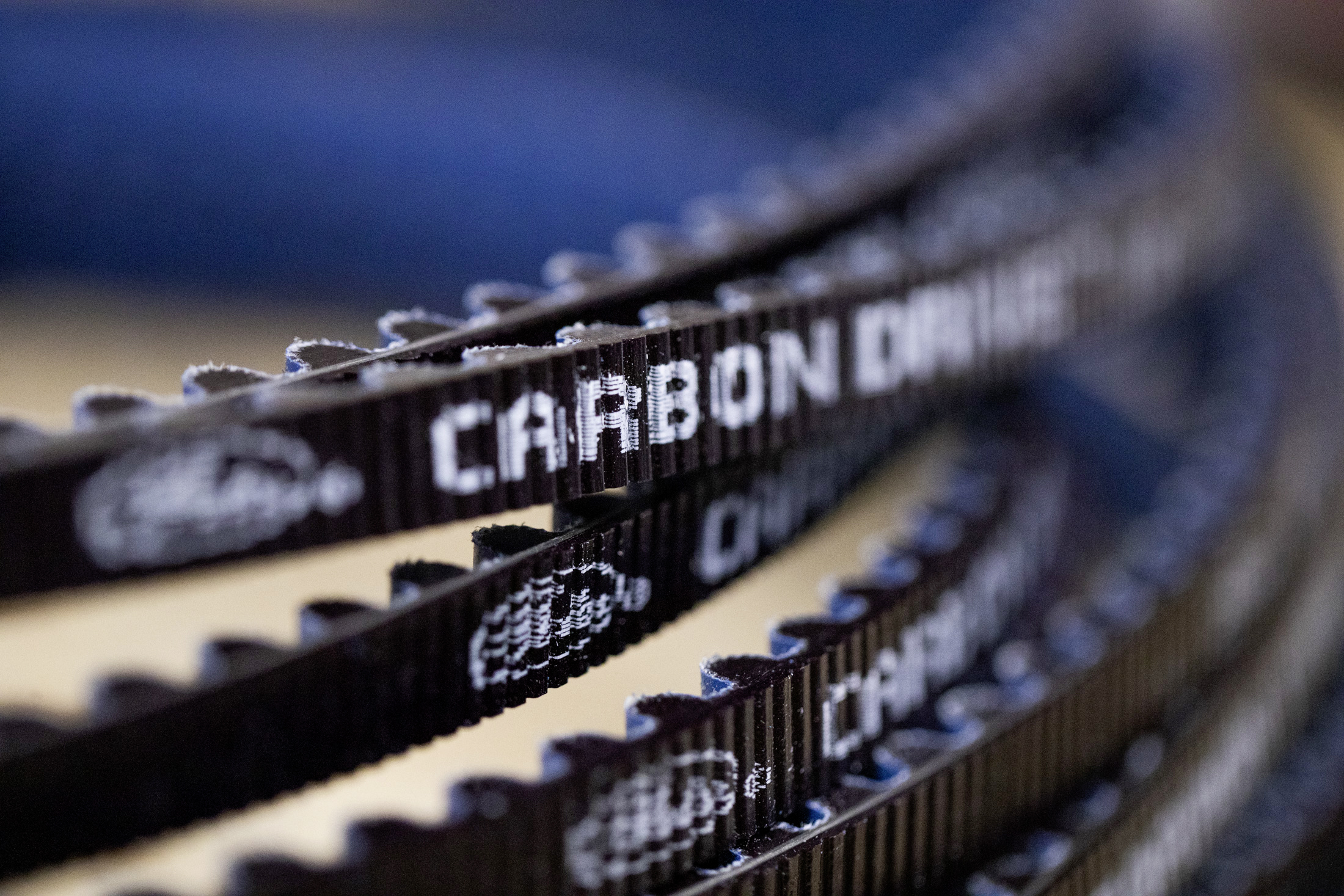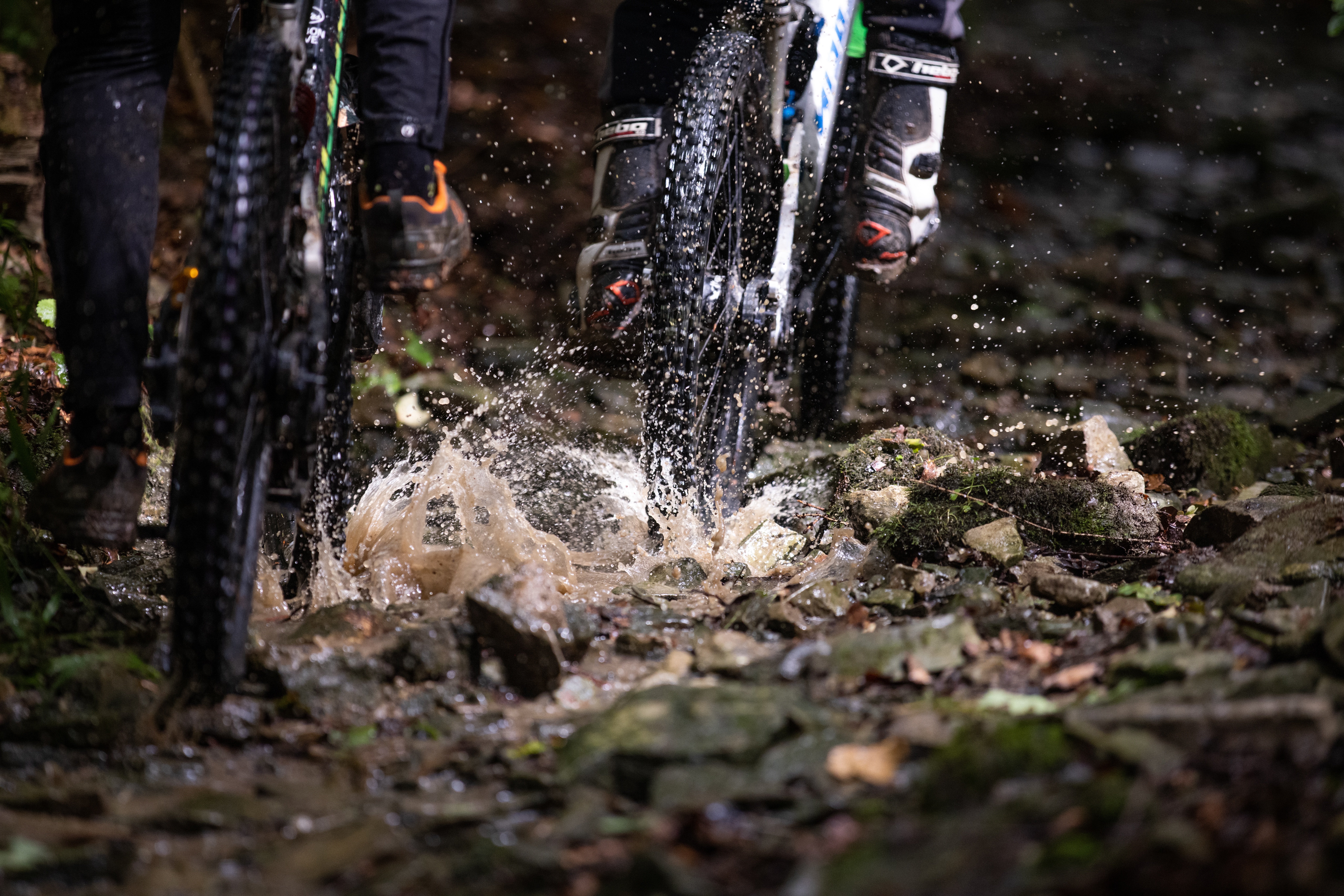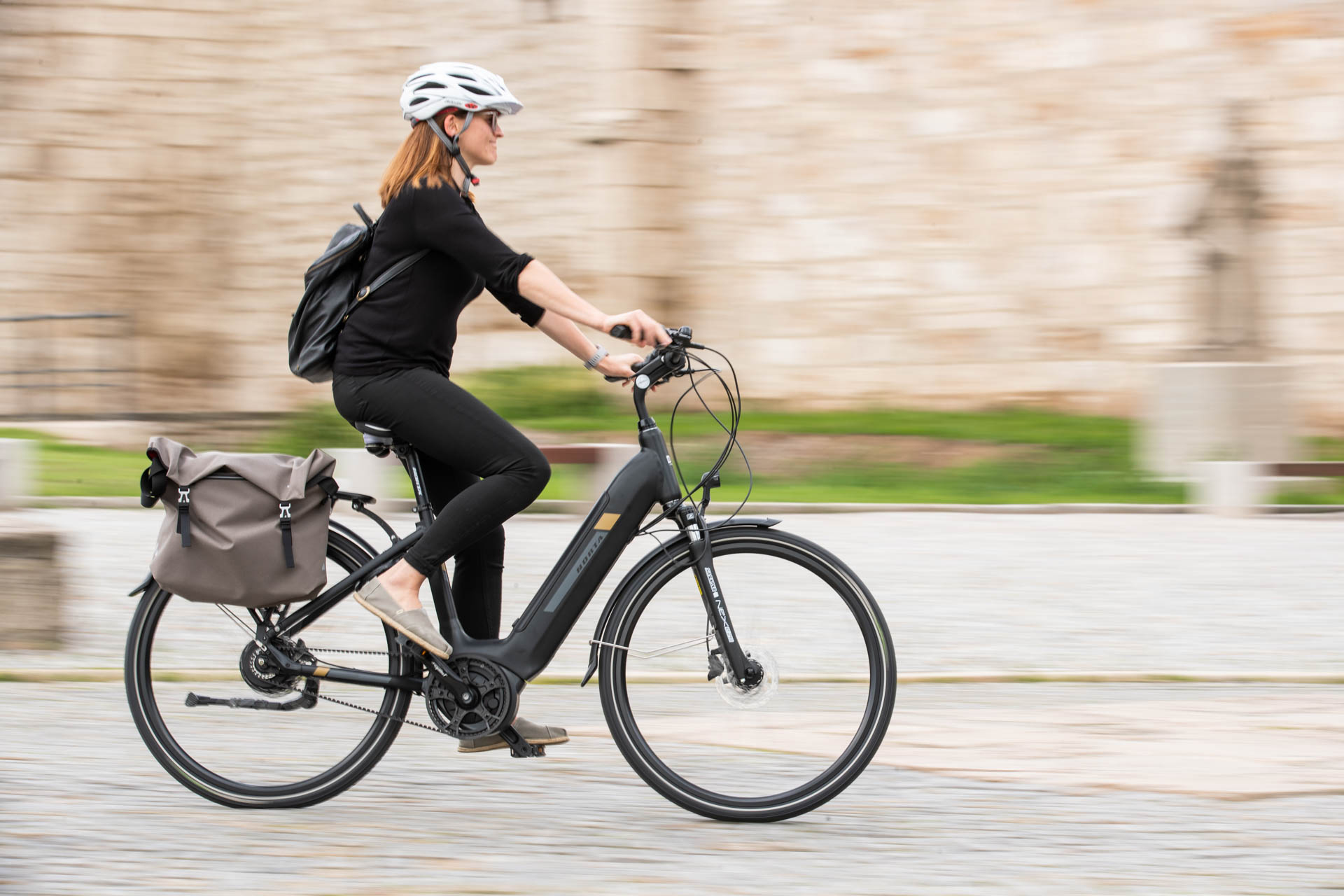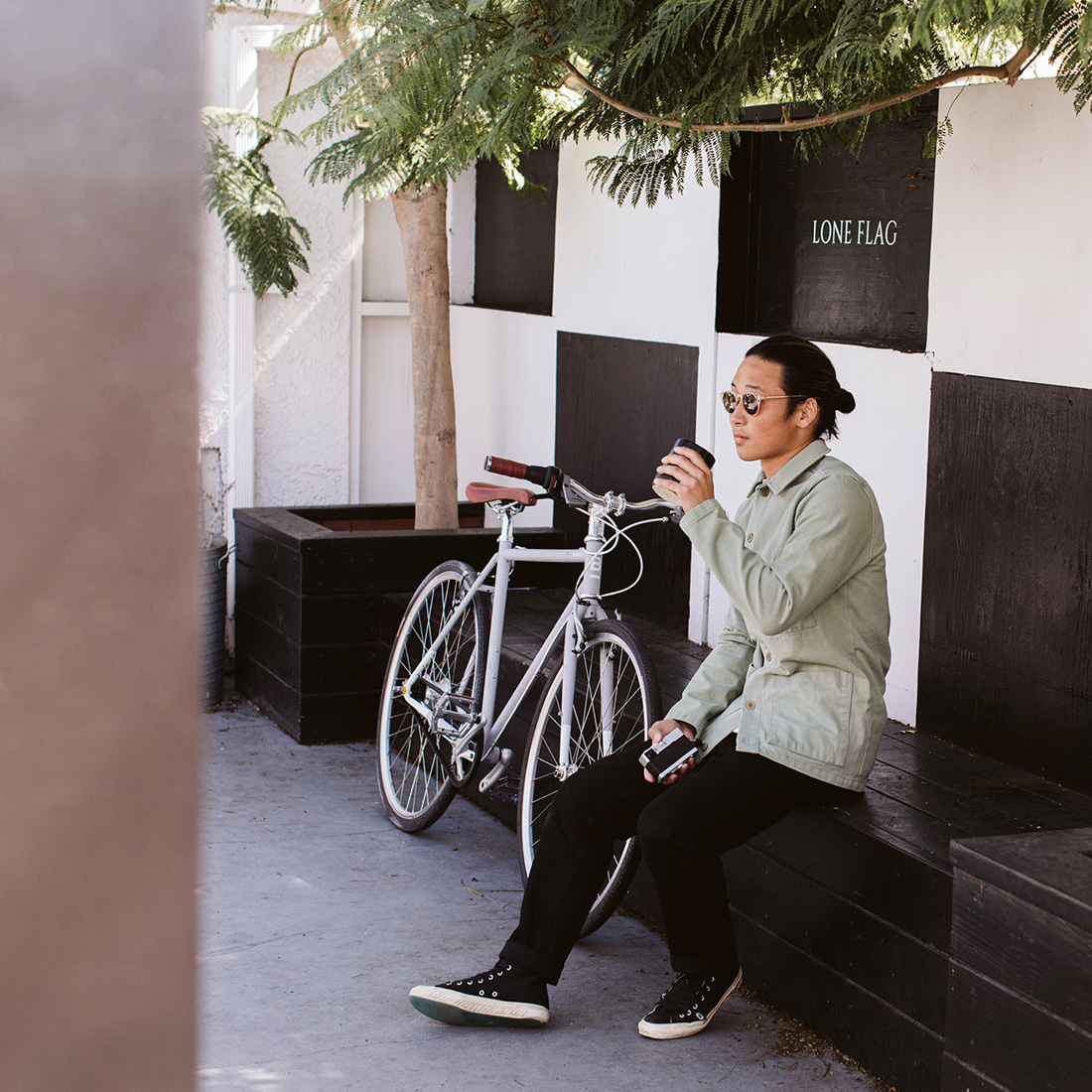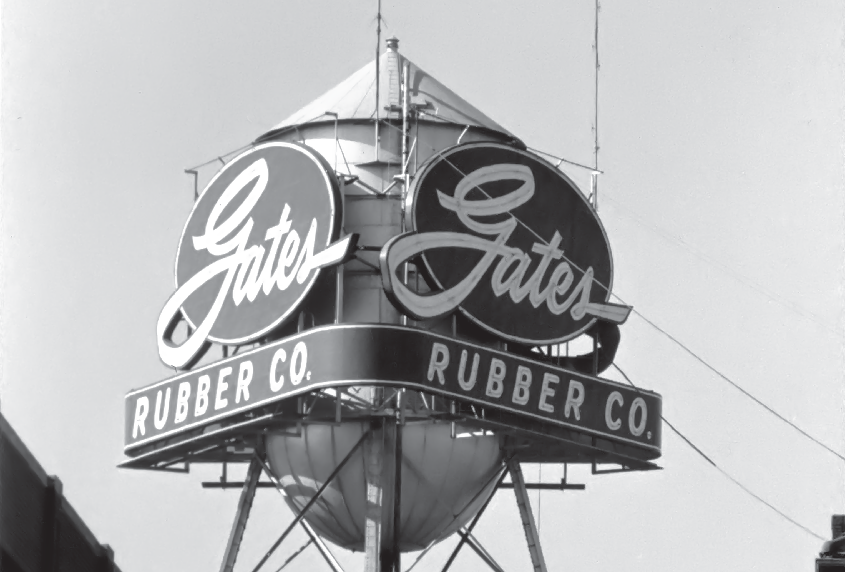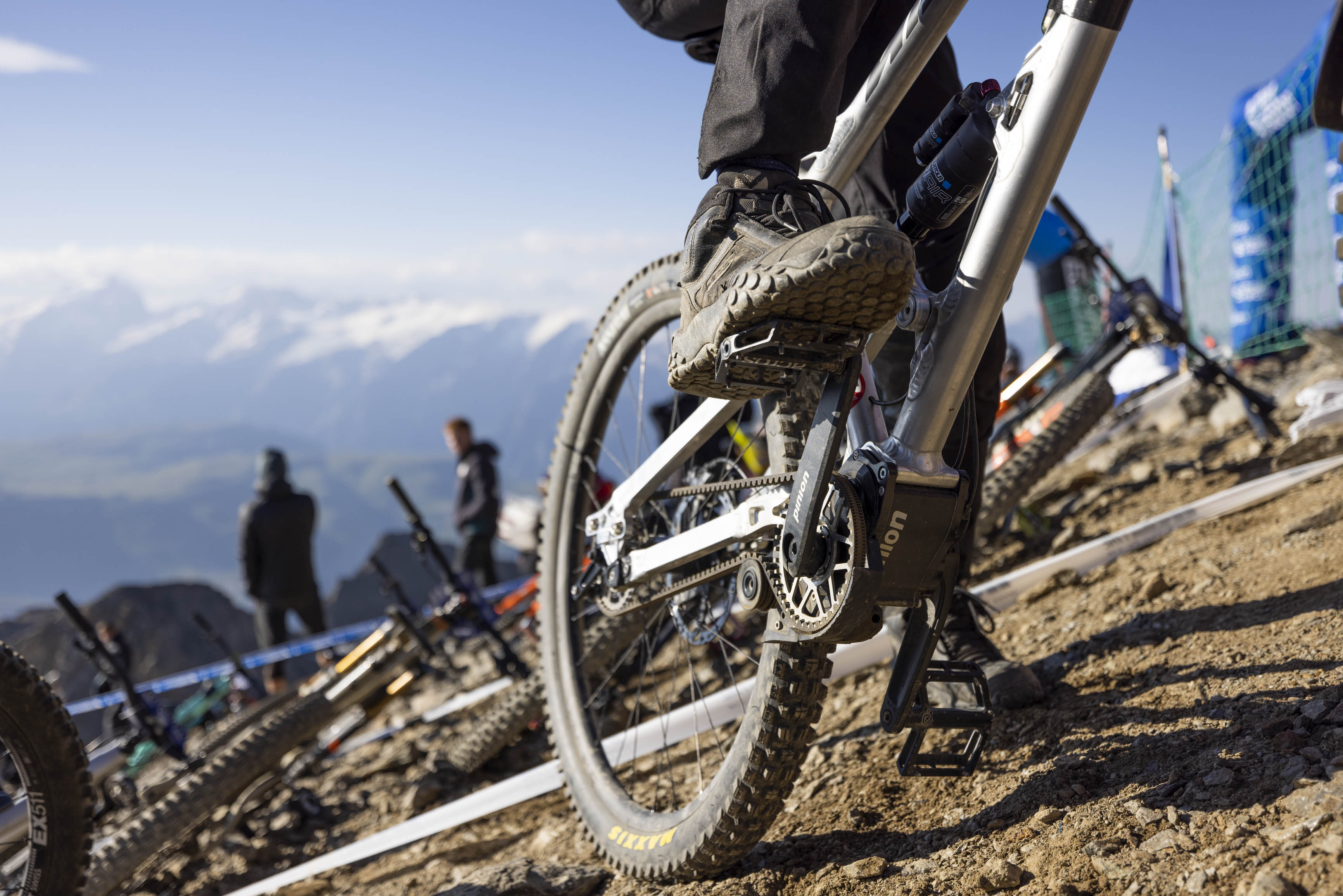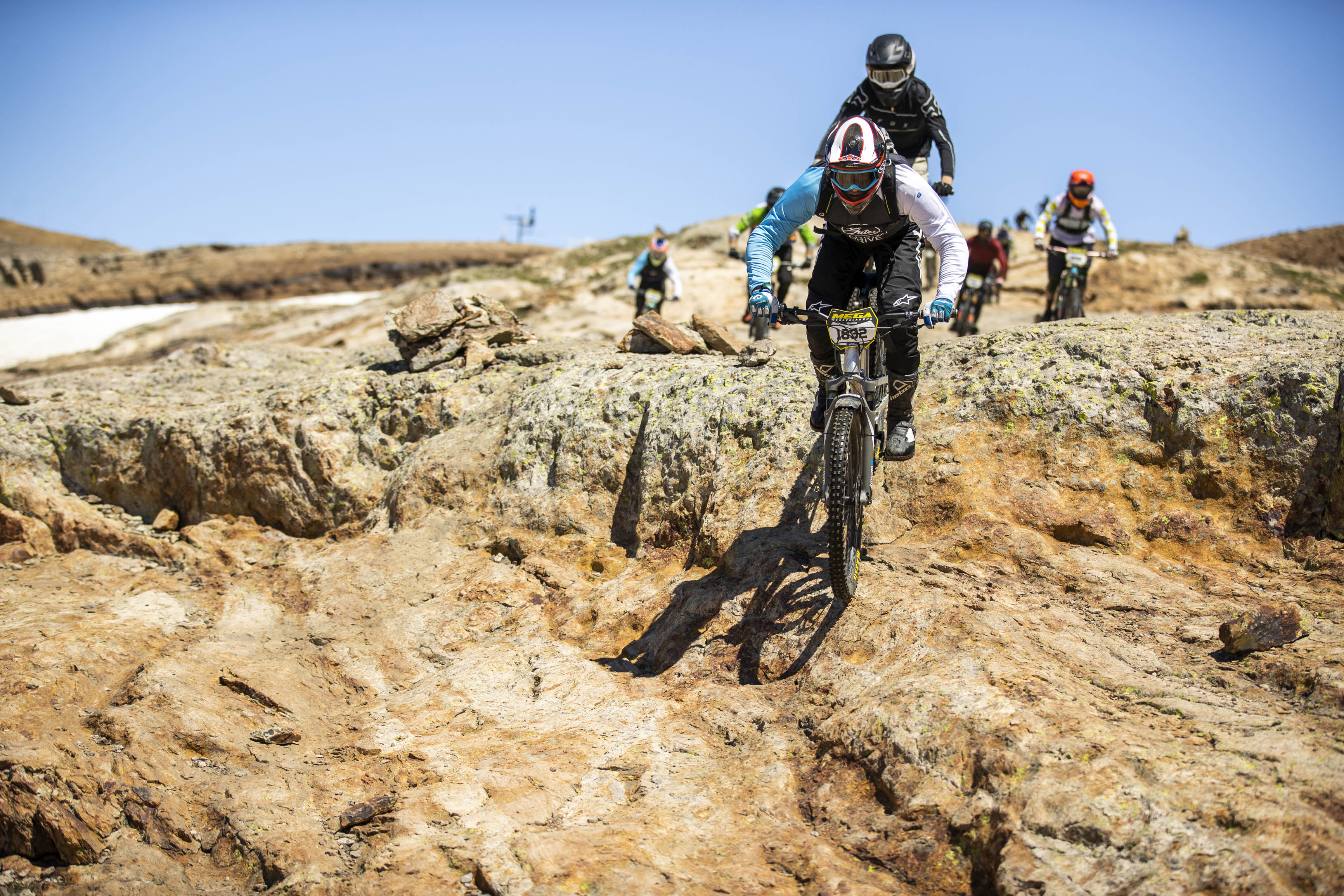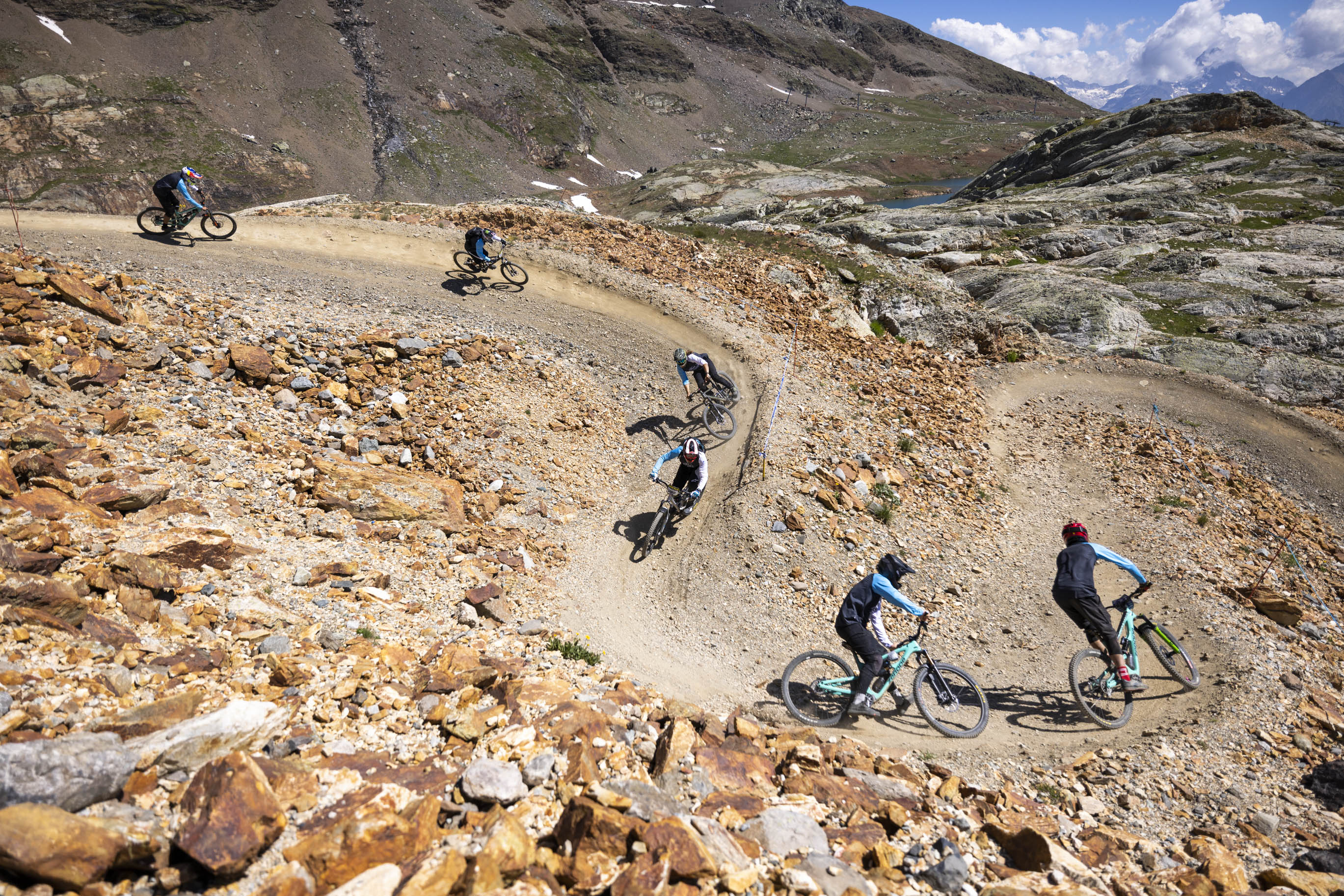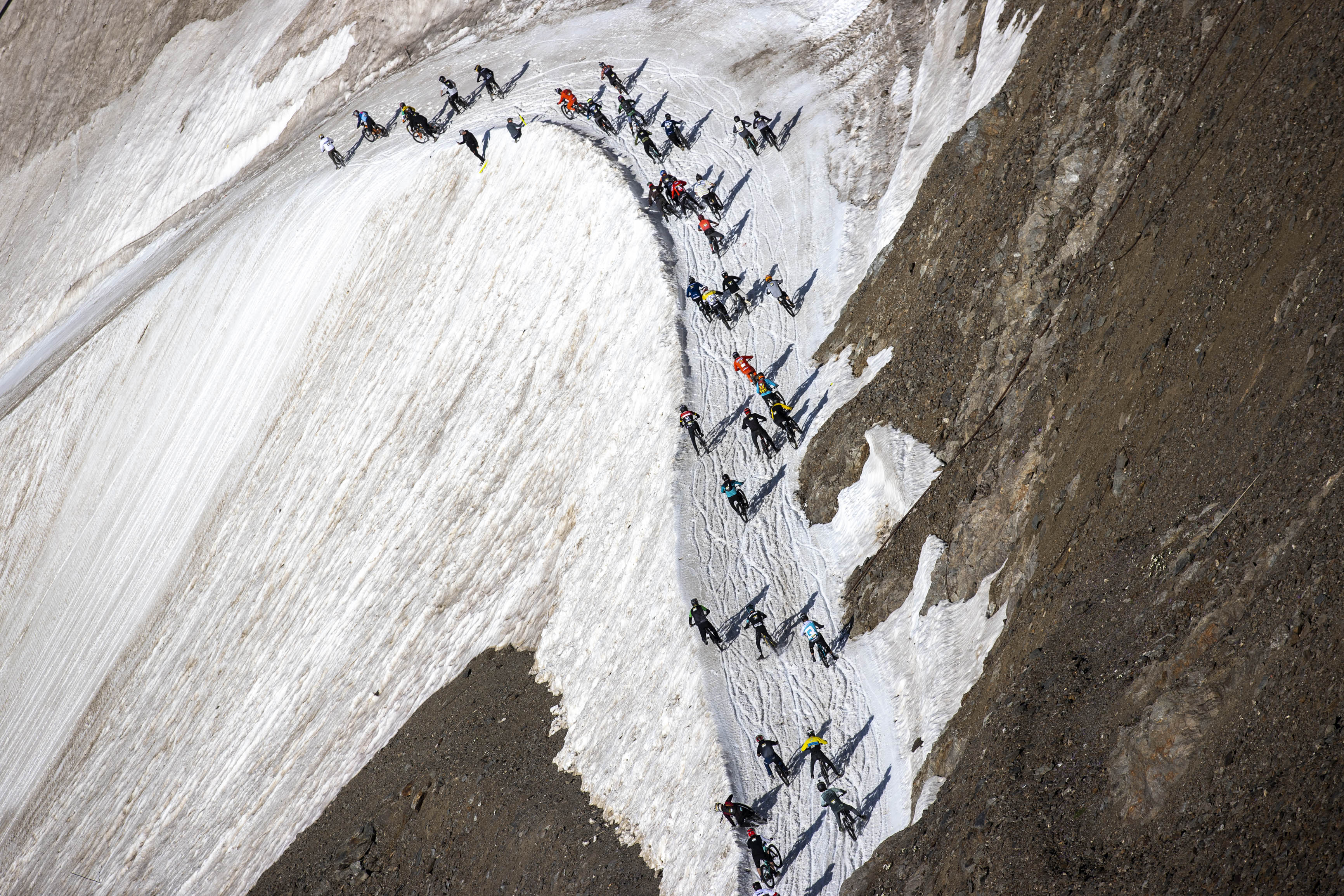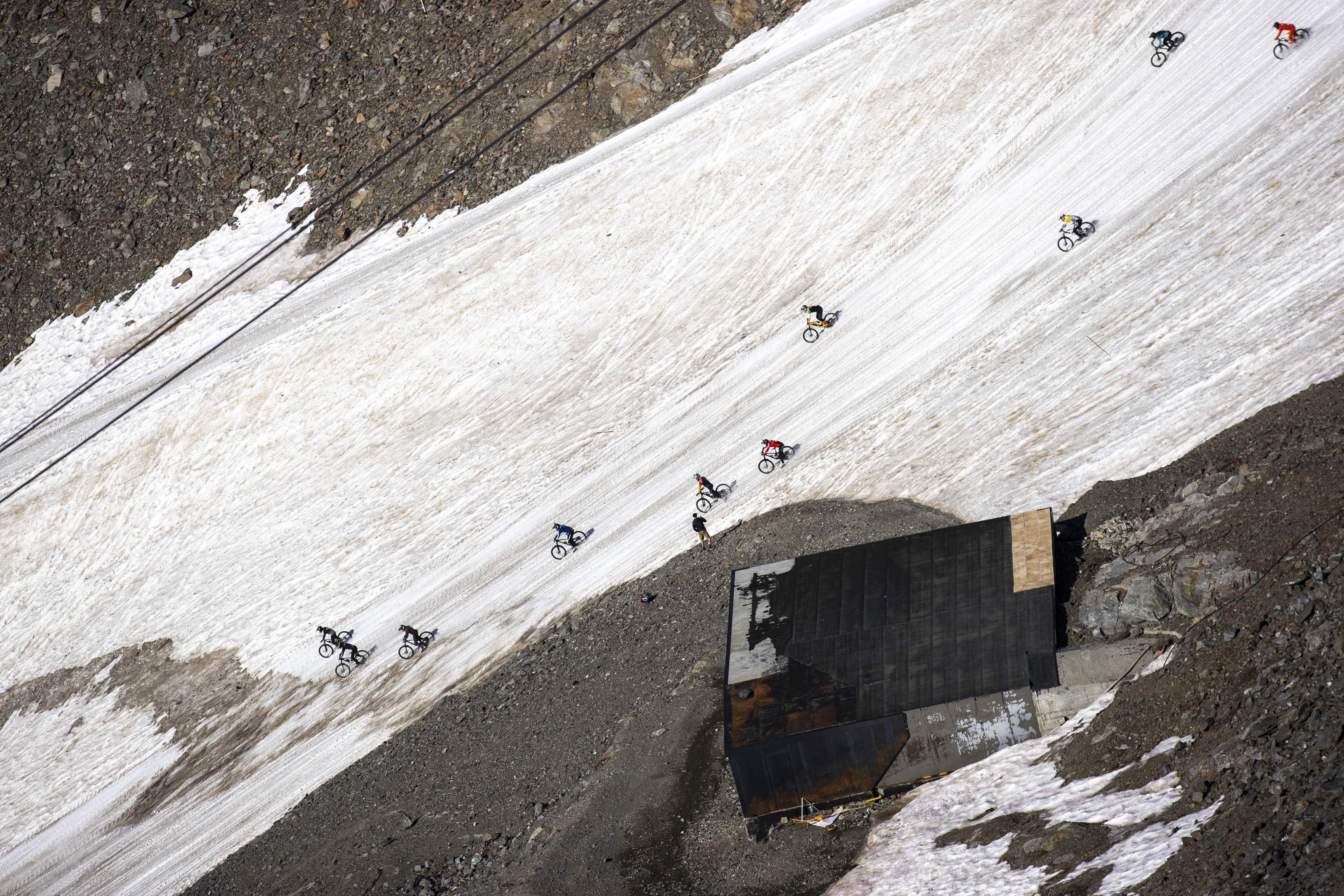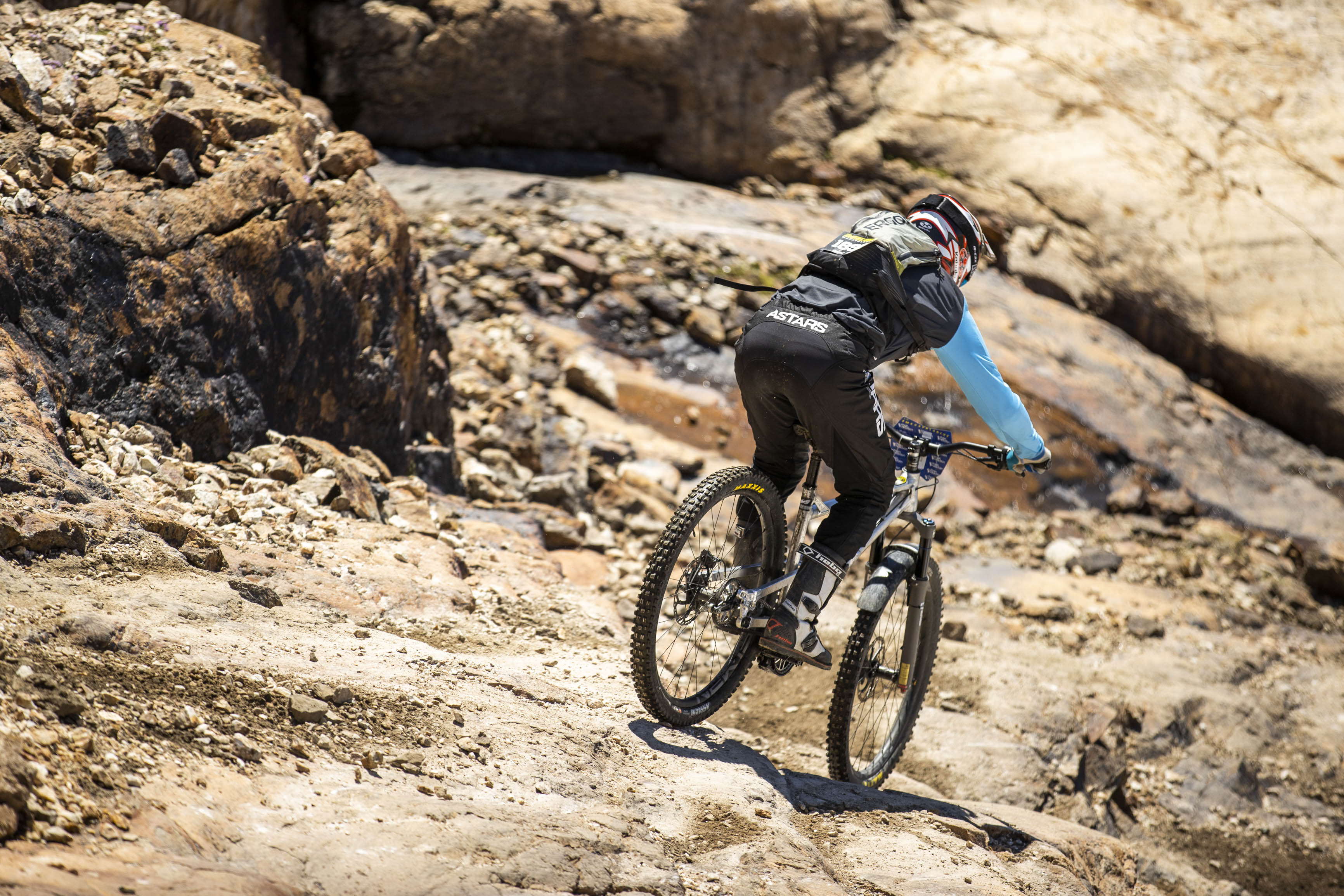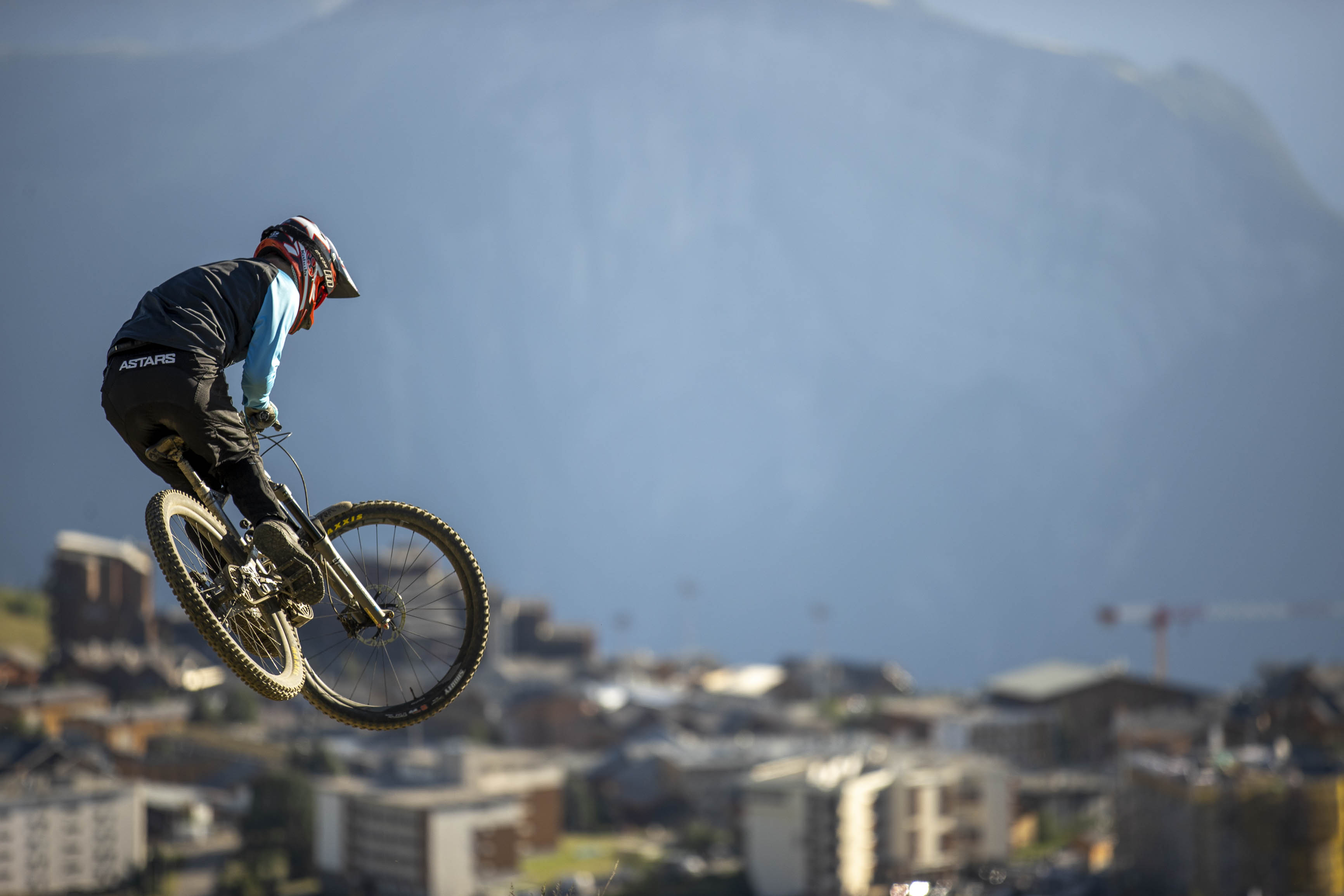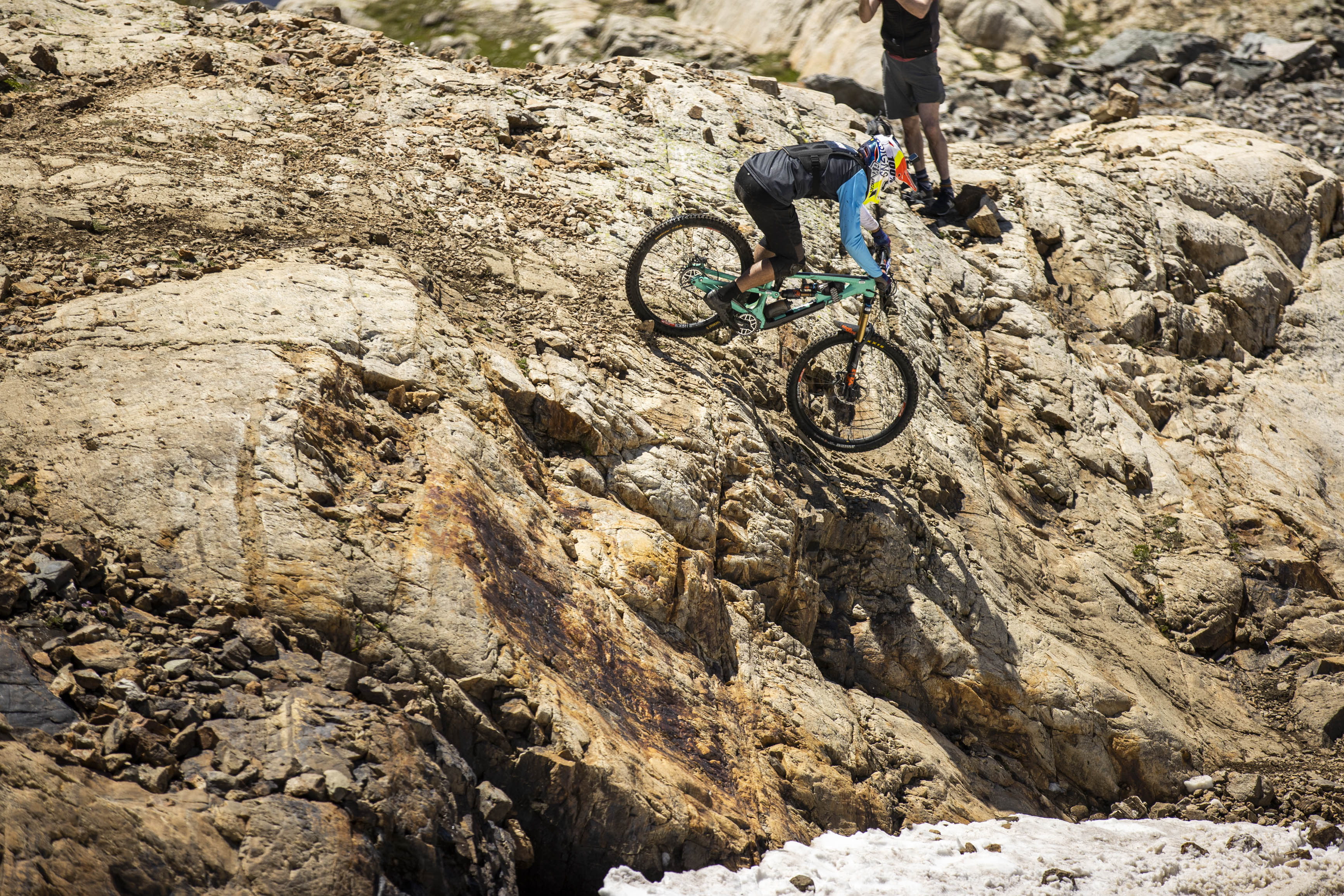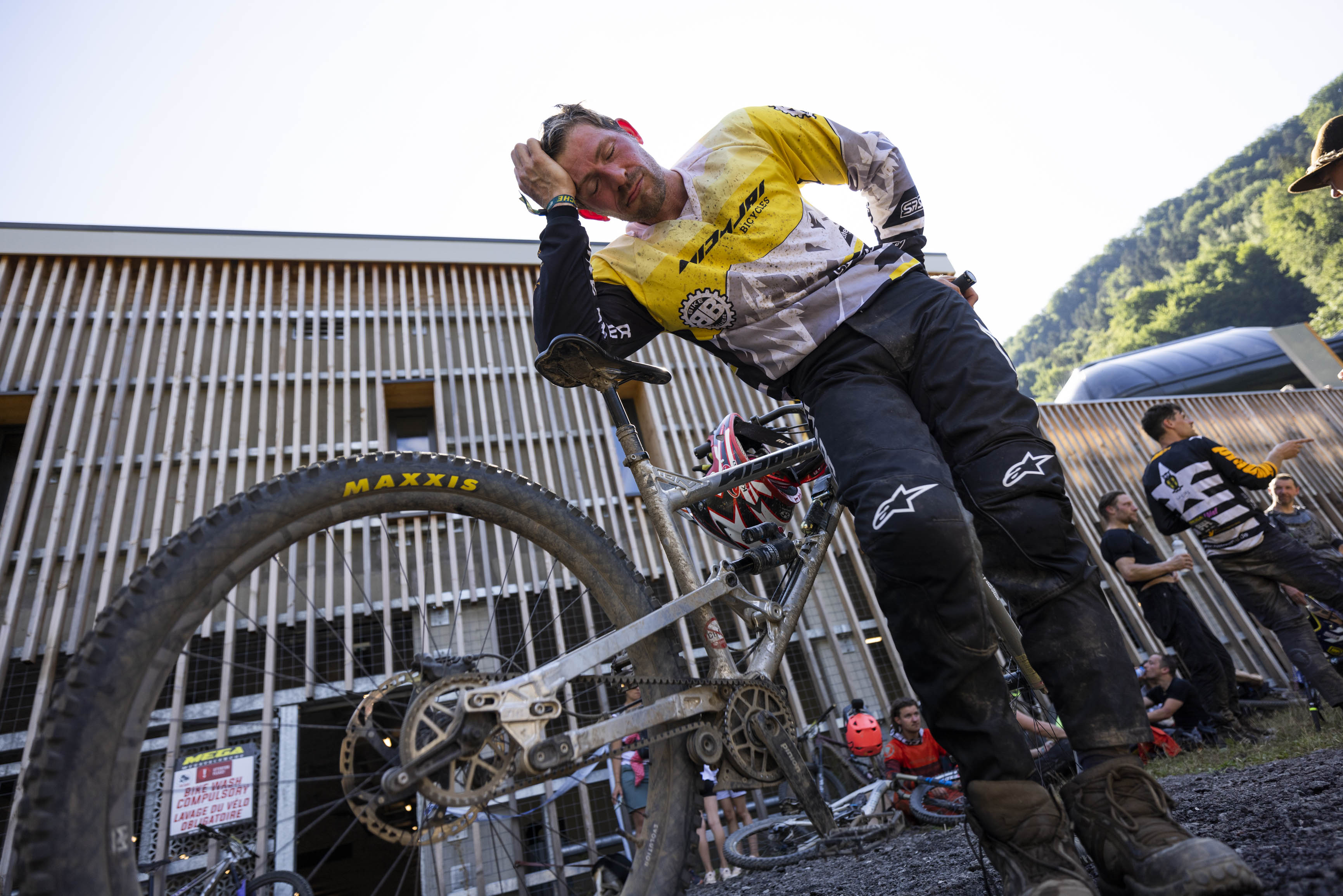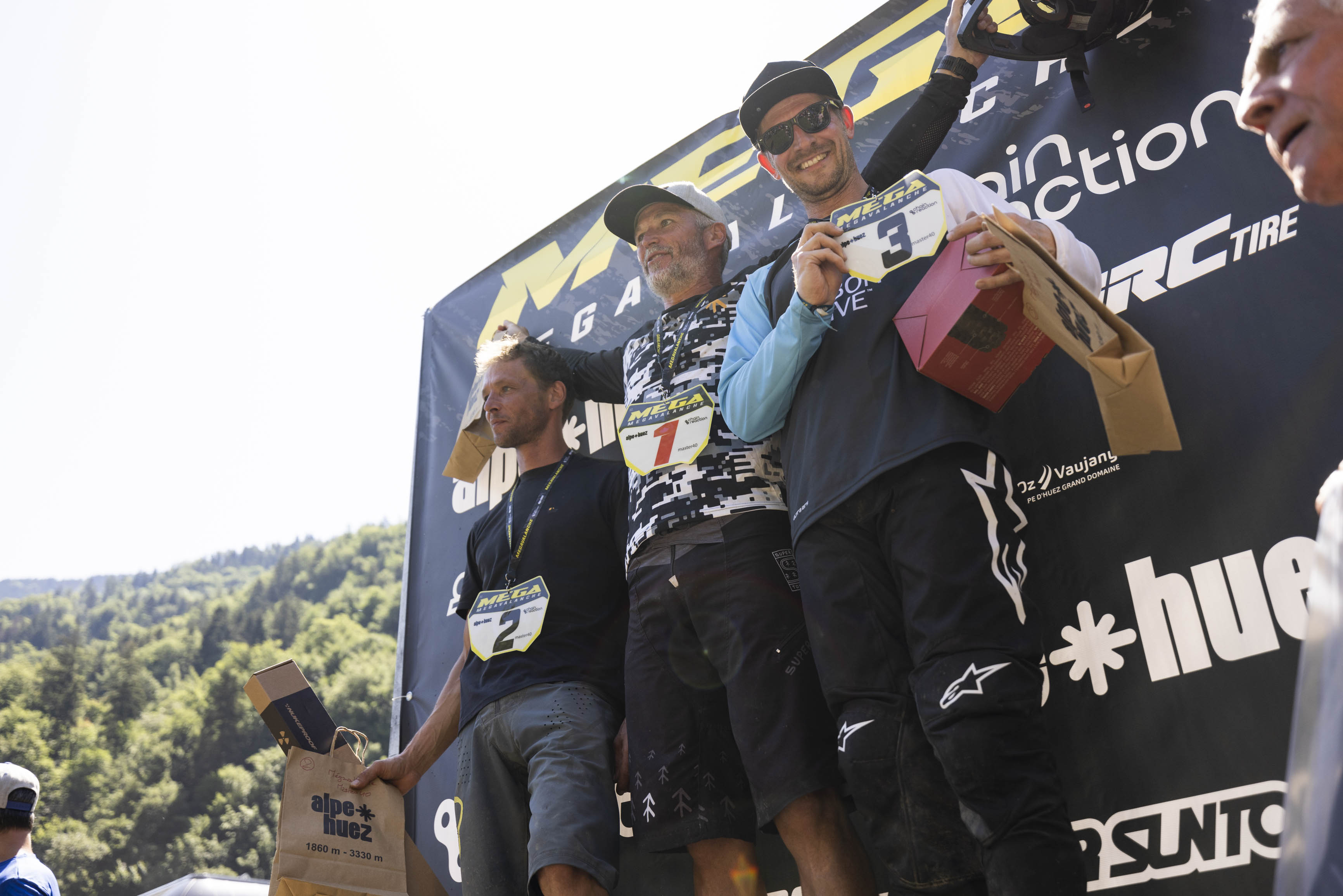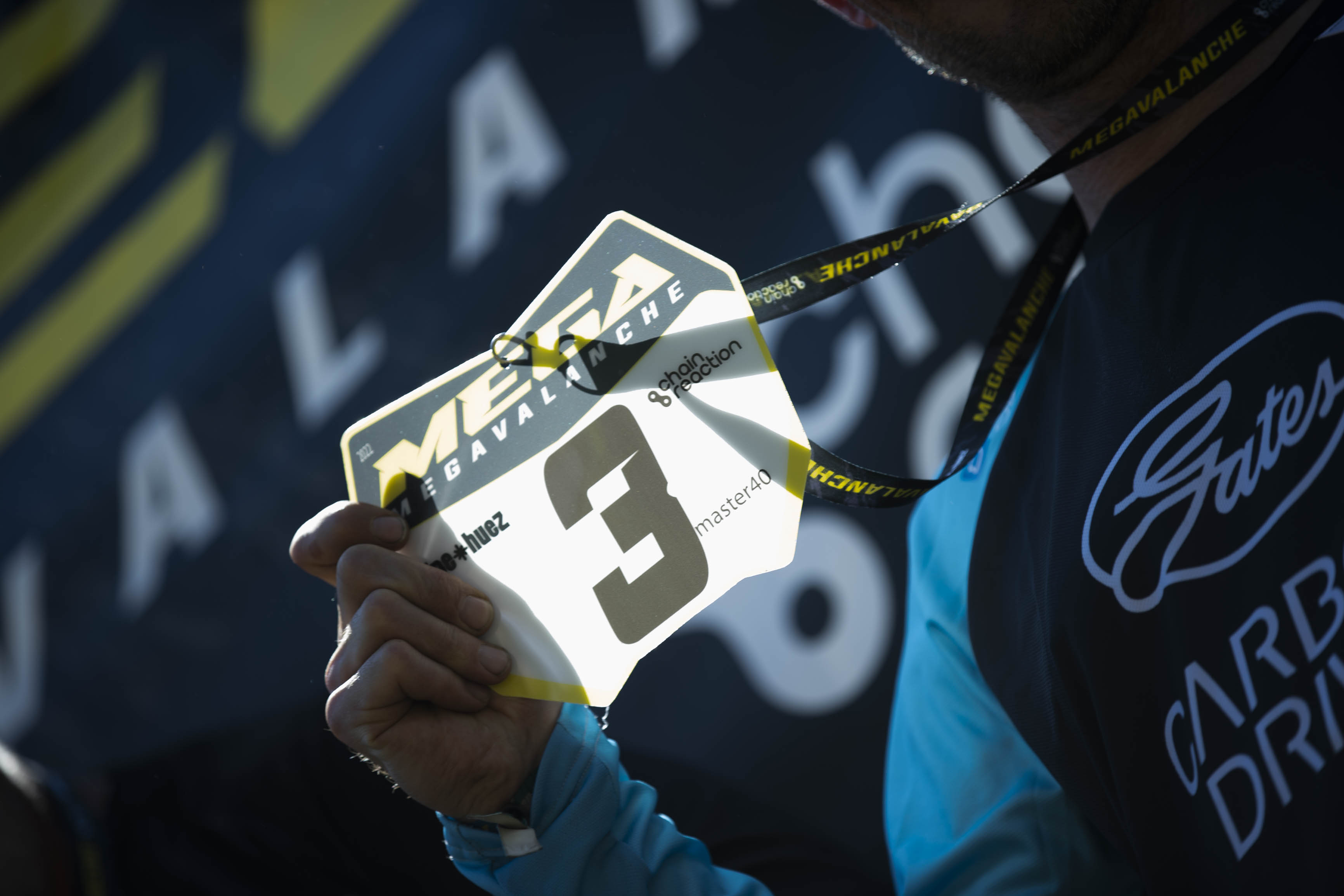We took the opportunity to pick Frank Schneider's brains about how best to prepare for a race like the Megavalanche. What tricks does an old hand like him have up his sleeve?
Punctures seem to be one of the most common reasons for break downs at the Megavalanche. What's the best way to be prepared against that?
Frank: That's right. In any case, you should ride a tire with a downhill carcass and sidewall protection. My favorite tire for such purpose is a combination of Maxxis Assegai in the rear and Shorty in the front. I ride them with a foam insert and, of course, tubeless. Additionally, I add a larger amount of sealant and also run a higher air pressure than usual. Front 2.1 bar and rear 2.3.
Does a puncture always mean the end?
Frank: A crack in the sidewall does. With a small puncture, however, it depends on a quick repair. I have a tubeless repair kit with me, which I have put on the down tube with Duct Tape. For quick access. If you find the puncture quickly, stuff it with a prepared plug and refill the tire with a Co2 cartridge, you still lose many positions, of course, but can resume the race relatively quickly. Provided you keep your nerves during the repair.
Did you keep your nerves when you pulled your shoe out of the drive?
Frank: I was frustrated and stressed and the damn thing was really stuck.
Is it possible to prepare for a situation like that?
Frank: Normally I would have ridden with motorcycle trial boots. They are perfect for something like that. No laces, stable, soft sole with top grip and at the same time a good protection for feet and ankles. Unfortunately, they failed me during the qualifying run. At one the sole came loose.
With lace-ups then maybe strap a diving knife to the leg? What else do you have with you? Or what do you skip?
Frank: I'm racing without a water bottle, backpack, spare tube or snacks. That's all just ballast. Besides the tubeless repair kit, I only have a multitool with me. Which is also taped to the down tube.
Can you tell us about your equipment? What kind of bike is ideal for such a race?
Frank: My bike is a recent Nicolai Ion G15 with 12-speed Pinion gearbox and Carbon Drive. This combination is absolutely rugged and virtually indestructible. The frame has 145 mm of rear travel. More travel would probably be a bit faster and more energy-saving on the long, hard descents. But at the Megavalanche there are also long pedaling passages and tough uphills. Since the advantage is then reversed the opposite. A bike like my Ion, with medium travel but a flat, long geometry for fast descents, which simultaneously can be ridden uphill without much loss, is therefore ideal.
What is your suspension setup? Do you have there another tip ready?
Frank: I ride a Suntour Durolux RC2 fork with 160 mm and a Suntour RS21 Edge Plus shock. All in all, I run a slightly higher pressure and less sag than in a normal enduro race, because of the uphills and pedaling passages. Quite important, however, is to increase the damping in a long-distance downhill like the Megavalanche. Compression damping, but the rebound damping in particular. The oil heats up significantly during the long ride, due to the numerous impacts and bumps. This changes the viscosity, so that the damping becomes faster and faster over time. So it is then a bit of a bucking at the beginning, but after a relatively short time and further down the track, when your power decreases, your suspension then works perfectly.
Thanks for the insights and tips and congratulations on your 3rd place.
